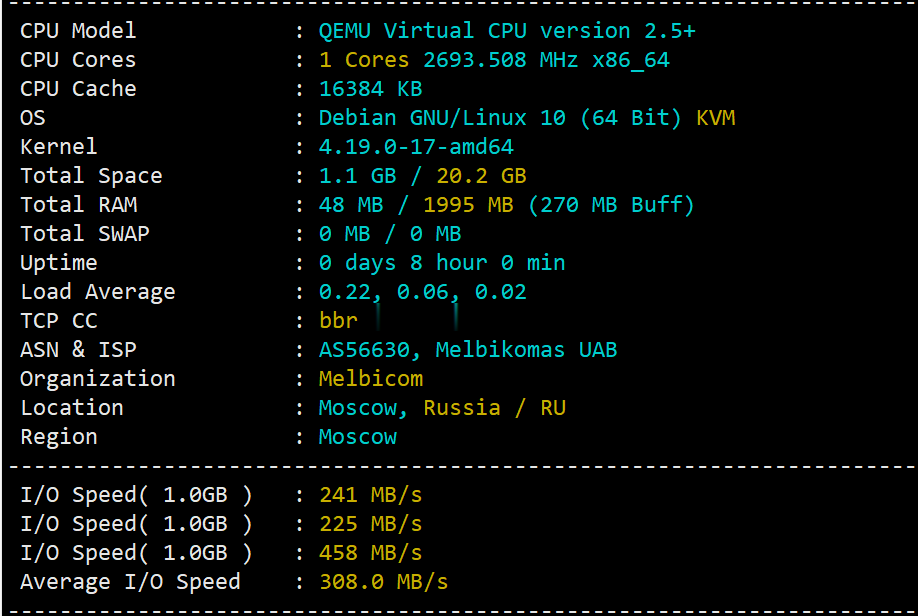observedttk
ttk 时间:2021-01-25 阅读:()
Kingetal.
Oncogenesis(2018)7:69DOI10.
1038/s41389-018-0077-zOncogenesisARTICLEOpenAccessTTKpromotesmesenchymalsignalingviamultiplemechanismsintriplenegativebreastcancerJamieL.
King1,2,BaotongZhang1,YixiangLi1,2,KathyP.
Li1,JianpingJ.
Ni1,HaroldI.
Saavedra3andJin-TangDong1,2AbstractAbnormalexpressionofTTKkinasehasbeenassociatedwiththeinitiation,progression,andtherapeuticresistanceofbreastandothercancers,butitsrolesremaintobeclaried.
Inthisstudy,weexaminedtheroleofTTKintriplenegativebreastcancer(TNBC),andfoundthathigherTTKexpressioncorrelatedwithmesenchymalandproliferativephenotypesinTNBCcells.
PharmacologicinhibitionandgenomicsilencingofTTKnotonlyreversedtheepithelial-to-mesenchymaltransition(EMT)inTNBCcells,butalsoincreasedtheexpressionofKLF5,aneffectorofTGF-βsignalingandinhibitorofEMT.
Inaddition,TTKinhibitiondecreasedtheexpressionofEMT-associatedmicro-RNAmiR-21butincreasedtheexpressionofmiR-200familymembersandsuppressedTGF-βsignaling.
TotestifupregulationofKLF5playsaroleinTTK-inducedEMT,TTKandKLF5weresilencedsimultaneously,whichreversedthedecreasedEMTcausedbylossofTTK.
Consistently,thedecreaseinmiR-21expressionandincreaseinmiR-200expressioncausedbyTTKsilencingwererescuedbylossofKLF5.
Altogether,thisstudyhighlightsanovelroleandsignalingpathwayforTTKinregulatingEMTofTNbreastcancercellsthroughTGF-βandKLF5signaling,highlightingtargetablesignalingpathwaysforTTKinhibitorsinaggressivebreastcancer.
IntroductionTriplenegativebreastcancer(TNBC)remainsacriticalpublichealthissue,ischaracterizedbylackofprogester-one,estrogen,andHER2expressionandismoreaggres-sivethanotherbreastcancersubtypes.
AsaresultoflackingER,PR,andHER2,whicharewell-establishedpharmaceuticaltargetsforbreastcancertreatments,tar-getedtreatmentsagainstTNBChaveyettobedeveloped.
Also,whilebasal(76%ofTNBC)andHer2+breastcancersrespondbettertochemotherapythanluminalsubtypes,theyhaveahigherprobabilityofrelapse1.
Thus,directedtherapiesagainstTNBCwouldimprovesurvivaloutcomesofthesepatients.
MolecularprolingwithinTNBCrevealedgeneticdif-ferencesthatcouldaffectcellularbehaviorandresponsestochemotherapy.
TNBCsubtypesincludefourgroups(BL1,BL2,M,andLAR2).
Themesenchymalsubtypeisenrichedingenesassociatedwiththeepithelial-to-mesenchymaltransition(EMT),whichisassociatedwithincreasedcellmigration,invasion,tumormetastasis,andresistancetochemotherapyandradiotherapy3,4.
MesenchymalTNBCcellsexhibitalossofepithelialmorphology,increasedcellmigrationandinvasion.
EMTmaycontributetoTNBCprogressionbecauseitisanearlyeventduringcancermetastasis.
EMTmayalsobemediatedbychangesinmoleculesthatcontrolmitosisandcentrosomebiology5–7,butmitoticproteinsthatregulateEMTphenotypeshavenotbeenfullycharacterized.
TheAuthor(s)2018OpenAccessThisarticleislicensedunderaCreativeCommonsAttribution4.
0InternationalLicense,whichpermitsuse,sharing,adaptation,distributionandreproductioninanymediumorformat,aslongasyougiveappropriatecredittotheoriginalauthor(s)andthesource,providealinktotheCreativeCommonslicense,andindicateifchangesweremade.
Theimagesorotherthirdpartymaterialinthisarticleareincludedinthearticle'sCreativeCommonslicense,unlessindicatedotherwiseinacreditlinetothematerial.
Ifmaterialisnotincludedinthearticle'sCreativeCommonslicenseandyourintendeduseisnotpermittedbystatutoryregulationorexceedsthepermitteduse,youwillneedtoobtainpermissiondirectlyfromthecopyrightholder.
Toviewacopyofthislicense,visithttp://creativecommons.
org/licenses/by/4.
0/.
Correspondence:HaroldI.
Saavedra(hsaavedra@psm.
edu)orJin-TangDong(j.
dong@emory.
edu)1WinshipCancerInstitute,DepartmentofHematologyandMedicalOncology,EmoryUniversitySchoolofMedicine,Atlanta,GA,USA2CancerBiologyGraduateProgram,EmoryUniversityLaneyGraduateSchool,Atlanta,GA,USAFulllistofauthorinformationisavailableattheendofthearticle.
Theseauthorscontributedequally:HaroldI.
Saavedra,Jin-TangDongOncogenesis1234567890():,;1234567890():,;1234567890():,;1234567890():,;TNBC,Her2+,andERbreastcancershaveelevatedfrequenciesofcentrosomeamplication(CA)andchro-mosomeinstability(CIN)relativetoothersubtypes8,9.
WepreviouslynotedoverexpressionoftheTTKkinaseinHer2+(ER-PR-)breastcancercellsdisplayingelevatedCAcomparedtountransformedmammaryepithelialcells10.
CAcausesmammarytumorigenesisinmiceandcorrelateswithhighstage,grade,andpoorrelapse-freeandoverallsurvivalofbreastcancerpatients11,12,whichsuggestsaroleforTTKinmammarytumordevelopmentandprogression.
CAalsoinducesCIN,de-differentiation,andinvasion,whichsuggestunderlyingmechanismsforTTK'sroleintumorigenesisandEMT13,14.
TTKplayscriticalrolesinaneuploidyandgenomicintegrityacrosscancertypes15–21,andisreportedtofunctioninpromotingcellinvasion22.
Inbreastcancer,highTTKexpressioncorrelateswithaggressivesubtypesandtherapeuticresistance10,17,20,23,24.
Additionally,higherTTKexpressionwasnotedamongagroupofspindleassemblyregulatorsinbreastcancercelllinesandpatientsamples19.
WefoundTNBCcelllinesexhibitedthehighestlevelsofTTK,whileknockdownofTTKincreasedapoptosisandpreventedtumorgrowth17,20.
GenomicsilencingofTTKinHer2+breastcancercellsattenuatesCA10,asdoespharmacologicalinhibition(unpublisheddata).
AlthoughTTKhashigherexpressioninTNBCcellscomparedtoothersubtypes,distinctbiologicalfunctionsofTTKinTNBCremainunclear.
Inthisstudy,wehypothesizedthatTTKexertsfunc-tionsinmesenchymalTNBCcellsbyregulatingKLF5andassociatedmiR-21ormiR-200microRNAs,sinceTTKfunctionsinTGF-βsignaling.
WeshowthemesenchymalstatusofTNBCcellsisdecreasedbytargetingTTK,whichisdependentonKLF5upregulation.
WealsoshowsilencingTTKreversedexpressionpatternsofmiR-21andmiR-200familymembers,inparallelwiththedecreasedmesenchymalphenotype.
OurstudyhighlightsadistinctTTK-inducedsignalingpathwayinTNBCwhereTTKmaintainstheproliferativeandEMTphenotypebysup-pressingKLF5,whichfacilitatesupregulationofmiR-21expressionanddownregulationofmiR-200s.
ClinicaltherapeuticstrategiescouldbedevelopedforTNBCbytargetingthisnovelsignalingpathway.
Fig.
1IncreaseinTTKexpressionanditscorrelationwithhighertumorgrade,triplenegativestatus,andworseoverallsurvivalinbreastcancer.
a–dBoxplotsofTTKgeneexpressionacrosstumorgrades(a),betweenER-positiveandER-negativebreastcancers(b),acrossPam50subtypesoftumors(c),andacrossdifferentsubtypesinbreastcancercelllinesfromtheGOBOdatabase(d).
eBoxplotscomparingTTKz-scoresbetweenTNBCsandnon-TNBCsfrompatientsintheTCGAdatabase.
fKaplan–MeiersurvivalanalysisillustratingthecorrelationbetweenhigherTTKexpressionanddecreasedoverallsurvivalinbreastcancerpatientsfromtheBreastMarkdatabaseKingetal.
Oncogenesis(2018)7:69Page2of13OncogenesisResultsIncreasedTTKexpressioniscorrelatedwithhighertumorgrade,triplenegativestatus,andworseoverallsurvivalinbreastcancerTodeterminethesignicanceofhigherTTKexpressioninbreastcancer,weanalyzedTTKexpressioninthreepublically-availableplatforms.
First,TTKexpressionwasanalyzedintheGOBOdatabase25.
AnalyzingTTKexpressionacrosstumorgradesindicatedhighTTKexpressionsignicantlycorrelatedwithgradeIIIbreasttumorscomparedtogradesIorIItumors(Fig.
1a).
TTKexpressionwasalsocomparedbetweenER-negativeandER-positivetumors,showingasignicantcorrelationbetwcomparedtoHER2+andER+and/orPR+celleenhigherTTKexpressionandERnegativity(Fig.
1b).
Fur-theranalysisoftumorsfromdifferentclinicalsubtypesofbreastcancerintheGOBOdatabaserevealedhigherTTKexpressionwasmost-signicantlycorrelatedwithtriplenegative(TN)subtypescomparedtoallothersubtypes(Fig.
1c).
AnalysisofbreastcancercelllinesintheGOBOsamplesshowedhigherTTKexpressioncorrelatedwithBasalAandBasalBsubtypescomparedtotheluminalsubtype(Fig.
1d).
Whencategorizedbyclinicalsubtypes,higherTTKexpressionwascorrelatedwiththeTNsub-typecomparedtoHER2+andER+and/orPR+celllines(Fig.
1d).
WethenanalyzedTTKexpressioninRNAseqdatageneratedfrombreastcancersfromTCGA.
ThelevelofTTKexpressionwassignicantlyhigherintheTNBCcases(n=89)whencomparedtoallnon-TNBCcases(n=439)(Fig.
1e).
WenexttestedwhetherincreasedTTKexpressioncorrelateswithpatientsurvivalusingtheBreastMarkdatabase26.
Among2091breastcancerpatientswithbothTTKexpressionandsurvivaldataavailable,higherTTKexpressionsignicantlycorrelatedwithdecreasedoverallsurvival(Fig.
1f).
TheseresultsindicatehigherTTKexpressioncorrelateswithaggressivefeaturesofbreastcancer,includinghighertumorgrade,ERnegativity,worsenedsurvival,andTNstatus.
TNBCcelllinesaresensitivetoanti-proliferativeactivityofTTKinhibitorPreviousstudiesdemonstratedTNBCcellproliferationisinhibitedbysilencingTTK17.
CellproliferationinothercancerlinesisalsoinhibitedbytreatmentwithatargetedTTKinhibitor,NMS-P71527,althoughTNBCcellularresponsetoNMS-P715hasnotbeentested.
Wepre-viouslyreportedsilencingTTKcoulddecreaseCAinHER2+breastcancercelllines.
ToinvestigateotherfunctionaleffectsofinhibitingTTKwithNMS-P715inbreastcancer,wetreatedcelllineswithinhibitorandmeasuredproliferationusingtheSRBassay.
ThemostprofoundchangesincellproliferationcausedbyNMS-P715treatmentoccurredinMDA-MB-231andHs578tcelllines(Fig.
2a,b).
Thisndingwasinteresting,becausebothofthesecelllinesbelongtothemesenchymalstemcell-likesubgroupofTNBCcelllines,andhavepreviouslybeenreportedtoexpresshigherlevelsofTTK20.
Tofur-therexaminetheeffectsofinhibitingTTKinTNBC,wegeneratedMDA-MB-231cellsstablyexpressingshRNAsagainstTTK(shTTK).
Signicantdecreaseincolonyformationandchangesincellmorphology,includingfewercellswithprotrusionsandmore-roundedcellswereFig.
2TTKinhibitionsuppressestheproliferationofTNBCcells.
a,bCellviabilityinMDA-MB-231andHs578tTNBCcellsasdeterminedbytheSRBassay.
**pTTKdownregulationviaviraldeliveryofshRNAinMDA-MB-231cells.
*pTTKinapanelofcelllinesKingetal.
Oncogenesis(2018)7:69Page3of13Oncogenesisdetectedoveran11-dayperiodinshTTKcells(Fig.
2c–e),suggestinganepithelialphenotype.
WealsoobservedsignicantlydecreasedcolonyformationinHs578tcellsupontransientknockdownofTTK(supplementalFig.
1).
MCF10AmammaryepithelialandDU-145prostatecan-cercelllinesexhibitlowerTTK,whilehigherTTKwasdetectedinotherbreastcancercelllines(Fig.
2f).
TTKinhibitionattenuatesthemesenchymalphenotypeofMDA-MB-231andHs578tTNBCcellsAfterobservingchangesinmesenchymalmorphologyinshTTKcells,weexaminedtheeffectofTTKontheepithelial-to-mesenchymaltransition(EMT).
InMDA-MB-231cellsexpressingpLKO.
1controlorshTTK,westernblottingdemonstratedanincreasedexpressionofE-cadherin(epithelialmarker)anddecreasedexpressionvimentin(mesenchymalmarker)intheshTTKgroup(Fig.
3a,b).
IntransientlytransfectedHs578tcells,weobserveddecreasedvimentin,butdidnotdetectchangesinE-Cadherinprotein(supplementalFig.
1).
TreatmentwiththeNMS-P715TTKinhibitoralsodecreasedvimentinexpres-sionandmesenchymalmorphologyinbothMDA-MB-231andHs578tcelllines(Fig.
3c,f).
ChangesinEMTmarkerswerealsomeasuredbyrt-PCR.
CDH1mRNAwassig-nicantlyincreasedinMDA-MB-231andHs578tcellstreatedwith0.
5μMofNMS-P715for24h,whilethemesenchymalmarkerswerenotsignicantlychangedineithercelllineat24or48h(Fig.
3e,h).
Thereweremod-eratedecreasesinvimentin,bronectin,ZEB1,andMMP-9andincreasesinCDH1andZO1inMDA-MB-231cellstreatedwith2μMNMS-P715for48h(Fig.
3i).
ChangesinmesenchymalmarkerswereconsistentinHs578tcells,whilethechangesinepithelialmarkersdifferedinthiscelllineatthe2μMdosefor48h(Fig.
3j),whichcouldbeattributedtocelldensityatthetimeofRNAcollectionorthatthesecellsexpresslowerTTKthanMDA-MB-231.
TheseresultssuggestthathigherTTKexpressionfacilitatesmesenchymalsignalinginTNBCcells,sincethesemarkerswerecon-sistentlychangedinMDA-MB-231andHs578tcellsathigherdosesofNMS-P715.
LowerKLF5expressioniscorrelatedwithTNstatusofbreastcancerandcanbeincreasedbyTTKinhibitionOurpreviousstudyindicatestheKLF5transcriptionfactormaintainstheepithelialphenotypeofcells28.
MesenchymalTNBCcelllines,includingMDA-MB-231andHs578T,expressalowerlevelofKLF5thanthoseofanepithelialphenotype29.
WethereforetestedwhetherKLF5playsaroleinTTK-promotedEMTinTNBCcells.
InMDA-MB-231cells,silencingTTKincreasedKLF5expressionatboththeRNAandproteinlevels(Fig.
4a,b),whichcouldbecoun-teractedbysilencingKLF5(Fig.
4a,b).
EMTmarkerswereanalyzedbyrt-PCR,andsilencingKLF5eliminatedtheeffectofsilencingTTKontheexpressionofEMTmarkersbronectin(FN),vimentin(VIM),ZEB1,andE-cadherin(CDH1)inMDA-MB-231cells(Fig.
4c).
Morphologically,siTTKcellsshowedlesslamentousvimentin,butsilencingKLF5eliminatedtheeffectofsiTTK(Fig.
4d).
WealsoanalyzedthefunctionaleffectsofsilencingTTKandKLF5onthemigrationandinvasionofMDA-MB-231cellsviaBoydenchamberassay.
SilencingTTKalonedidnotsig-nicantlyaffectcellmigration,butsignicantlydecreasedcellinvasionthroughmatrigel-coatedmembranes(Fig.
4e,f);andexpressionofMMP-9,involvedindegradationoftheextracellularmatrixduringcellinvasion,wasmarkedlydecreasedinthesiTTKgroup(Fig.
4g).
SimilartoitseffectsonEMTmarkers,silencingKLF5eliminatedchangesincellinvasionandMMP-9expressioncausedbyTTKsilencing(Fig.
4f,g).
WedeterminedthatsilencingKLF5alonehadsimilareffectsasdualsilencingofTTKandKLF5oncellinvasion(supplementalFig.
2).
TheseresultsindicatethatdownregulationofKLF5isrequiredforTTKtoinduceamesenchymalphenotypeinTNBCcells.
ToevaluatethecorrelationsbetweenTTKandKLF5expressioninTNBC,weanalyzedTTKandKLF5proteinexpressioninapanelofcelllines.
InMCF10Acells,TTKlevelswerelow,whileKLF5wasexpressedatmoderatelevels.
Meanwhile,theTNBCcelllinesusedexpressedhigherlevelsofTTKbutlowerKLF5comparedtoMCF10Acells(Fig.
4h).
WeanalyzedasmallsubsetofadditionalTNBCcelllines,andobservedmoderateKLF5expressionintheTNBCcellslineMDA-MB-468thatdonotbelongtotheMSLsubgroup.
WealsoanalyzedasmallcohortofprimarybreasttumortissuesforTTKandKLF5expression.
WhilewedidnotdetectsignicantchangesinTTKexpressioninthiscohortbetweensub-types,weobservedchangesinKLF5localizationbetweensubtypes.
FortheTNBCsamplesinthiscohortwithTTKexpressionweobservedlowKLF5levels,andwhereKLF5waspresent,itwasnotlocalizedinthenucleuslikeinthenormalsamples(SupplementalFig.
4).
IntheGOBOdatabase,lowerKLF5expressionwassignicantlycorrelatedwiththeBasalBsubtype(whichincludesMDA-MB-231andHs578t)andtheoverallTNstatusbutnotwiththeBasalAstatusinbreastcancercelllines(Fig.
4i).
IntheTCGAdatabase,higherKLF5expressioncorrelatedwiththeTNstatusinbreastcancer(Fig.
4j).
TNBCsintheTCGAdatabasehavenotbeenclassiedintosubgroupsofBasalA,BasalBandMesenchymalstemcell-like,whichpreventedusfromtestingwhichsubtypeiscorrelatedwiththehighestKLF5expression.
Toaddressthis,weselectedgenesover-expressedindifferentsubtypesofTNBCidentiedinapreviousstudy30,andanalyzediftheirexpressioncorre-lateswithKLF5expressionintheTCGAdataset.
Inthisanalysis,thebasal-like-immunosuppressedgroupandluminalandrogenreceptorsubtypeshadthehighestpercentagesofgenescorrelatedwithKLF5expressionKingetal.
Oncogenesis(2018)7:69Page4of13Oncogenesis(90.
9and92.
9%,respectively),withthebasal-likeimmu-nosuppressedgrouphavingthehighestnumberofgeneswithSpearman'scoefcientsover0.
40(36.
4%),whichisindicativeofamoderatecorrelation(Fig.
4k).
Thebasal-likeimmunoactivatedgrouphad64.
3%ofgenesasso-ciatedwithKLF5expression,butonly7%hadmoderateSpearman'scoefcients.
Themesenchymalsubgrouphadonly40%ofgenesassociatedwithKLF5expression,noneFig.
3TTKinhibitionattenuatesthemesenchymalstatusofMDA-MB-231andHs578tTNBCcells.
aVimentinandE-cadherinproteinexpressioninMDA-MB-231cellsstablyexpressingthepLKO.
1vectorortheshTTKshRNA,asdetectedbywesternblotting.
bDetectionofvimentinexpressionbyimmunouorescencestaininginMDA-MB-231cellsstablyexpressingpLKO.
1orshTTK.
c–hDetectionofEMTmarkersinMDA-MB-231(c–e,i)andHs578t(f–h,j)TNBCcelllinestreatedwiththeNMS-P715TTKinhibitorbywesternblottingforprotein(candf,upper),immunouorescencestainingforvimentin(d,glower),andbyreal-timePCRformRNA(e,h–j).
*pTTK-inducedEMTandworsepatientsurvivalinTNBC.
a,bValidationofRNAi-mediatedTTKandKLF5knockdowninMDA-MB-231TNBCcellsbywesternblotting(a)andreal-timePCR(b).
**pTTKorTTK/KLF5.
dCellularmorphologyanddetectionofvimentinbyimmunouorescencestaininginMDA-MB-231cellsafterTTKorTTK/KLF5silencing.
eRepresentativeimagesofinvadedcellsintheinvasionassay.
fQuanticationofcellinvasion.
*pTTKorTTK/KLF5knockdown.
*pTTKandKLF5proteinexpressionbywesternblottingindifferentbreastcancercelllines.
SubtypesareindicatedbyMformesenchymal,BforbasalorLARforluminalandrogenreceptor.
iBoxplotsofKLF5expressionindifferentsubtypesofbreastcancercelllinesfromtheGOBOdatabase.
jBoxplotscomparingKLF5z-scoresbetweennon-TNBCsubtypesandTNBCpatientsusingdatafromtheTCGAdatabase.
kDistributionofgenessignicantlycorrelatedwithKLF5foreachTNBCsubtype.
Toprowindicatesgeneswithsignicantpvalues(TTKlevelscouldbecorrelatedwithdecreasedKLF5inmesenchymalTNBC,partiallyduetochangesinlocalizationofthetranscriptionfactor.
TTKinhibitionattenuatesTGF-βsignalingandmiR-21expressionTGF-βsignalingisthemostpotentofthesignalingpathwaysknowntoinduceEMT,andKLF5waspreviouslydemonstratedtoparticipateinTGF-βsignaling31,32.
WetestedifTGF-βsignalingisinvolvedintheinverserela-tionshipbetweenTTKandKLF5andtheirroleinEMTregulationinTNBCcells.
TTKhasbeenreportedtoregulatetheTGF-βsignalingpathway,asTTKmodulatesSMAD3phosphorylation33–35.
InMCF10Acells,whichclearlyrespondtoTGF-β,weconrmedthatTGF-βinducedEMT,asindicatedbymorphologicalandEMTmarkerchanges(Fig.
5b).
ThisinductionofEMTwasmildlypreventedwhenMCF10AcellsweretreatedwithNMS-P715inconjunctionwithTGF-β(Fig.
5b).
WefurthertestedtheeffectofTTKinhibitiononSMAD3phosphorylationinMDA-MB-231cells,andfoundinhibitionofTTKbyNMS-P715slightlydecreasedTGF-β-inducedSmad3phosphorylation(Fig.
5a).
Micro-RNAsareimportantmediatorsofEMT,andmicro-RNA21(miR-21),adownstreamtargetofTGF-βinvolvedinEMT,isregulatedbyTTKinglioblastomacells34.
TotestifmiR-21isregulatedbyTTKinTNBCcells,miR-21expressionwasmeasuredinMDA-MB-231cellsaftersilencingTTKorNMS-P715treatment.
miR-21expressionwasdecreasedbysiTTKandsimultaneousknockdownofKLF5rescuedthedownregulationofmiR-21bysiTTK(similartosiKLF5alone,supplementalFig.
3,Fig.
5c).
miR-21expressionwasalsodecreasedinNMS-P715treatedMDA-MB-231cells(Fig.
5d).
EctopicexpressionofKLF5decreasedmiR-21expressioninMDA-MB-231cells,whichwasaugmentedbyTTKsilencing(Fig.
5e).
TheseresultssuggestTTKmodulatesmiR-21expressioninTNBCcells,andtheeffectofTTKislikelydependentonKLF5downregulation.
Functionally,ectopicexpressionofmiR-21partiallyattenuatedtheeffectsofTTKsilencingonEMTandinvasioninMDA-MB-231cells(Fig.
5g,h),furthersuggestingapartialroleofmiR-21inTTK-mediatedEMTinTNBCcells(Fig.
5f).
InhibitoryeffectsofTTKonKLF5-activatedmiR-200expressionThemiR-200familyofmicro-RNAsregulatesEMTinafeedbackloopwithZEB1andZEB2,whichbindpromoterregionsofmiR-200stopreventtheirtranscriptionandrepresstheepithelialphenotype36.
Inapreviousstudy,weshowedthatKLF5maintainstheepithelialphenotypebydirectlybindingtotheGCboxesinthemiR-200genepromoterstoactivatetheirexpression28.
Inthesamestudy,wealsoshowedthatTGF-β–inducedEMTrequiresKLF5downregulationandthesubsequentdown-regulationofmiR-200s28.
Finally,miR-200familymem-berswereupregulatedinMDA-MB-231cellsfollowingectopicKLF5expression28.
WethereforetestedwhethertheinhibitoryeffectofTTKonKLF5expressionalsoleadstotherepressionofKLF5-activatedmiR-200sduringTTK-inducedEMTinTNBCcells.
InMDA-MB-231cells,weobservedsignicantlyincreasedmiR-200aandmiR-200cexpressionfollowingafterNMS-P175treatment(Fig.
6a).
SilencingTTKshowedsimilareffectsontheexpressionofmiR-200aandmiR-200cinMDA-MB-231cells(Fig.
6b).
ExpressionofmiR-200aandmiR-200cwasalsodecreasedbysilencingbothTTKandKLF5andsimilarresultswereobservedinthesiKLF5alonegroup(SupplementalFig.
3,Fig.
6c).
Functionally,wetestedifcombiningTTKinhibitionwithmiR-200overexpressionattenuatestheeffectofTTKonEMTinTNBCcells.
CellsweretransfectedwithapoolofmiRNAmimicscontainingmiR-200a,miR-200b,andmiR-200candtreatedwiththeNMS-P715inhibitor.
NMS-P715treatmentalonedownregulatedmesenchymalmarkersvimentin,ZEB1andSlug,whileupregulatingepithelialmarkerCDH1(Fig.
6d,e).
OverexpressionofmiR-200familymembersalonehadsimilareffectsasNMS-P715treatmentalone.
Interestingly,combinationofmiR-200overexpressionwithNMS-P715treatmentfur-therdownregulatedvimentin,Slug,ZEB1andupregulatedCDH1comparedtotheothergroups(Fig.
6d,e).
WealsotransfectedcellswithinhibitorsagainstmiR-200aandmiR-200ctodetermineifinhibitingthesemicroRNAsattenuatestheeffectofTTKinhibitiononEMTchanges.
MorphologicalchangeswereobservedinMDA-MB-231cellstreatedwithinhibitorsofmiR-200aandmiR-200c,indicativeofamesenchymalphenotype,whichwerenotpreventedwhenthesegroupsweretreatedwithNMS-P715(Fig.
6f).
DownregulationofvimentinbyTTKinhibitioninMDA-MB-231cellswasnotreversedbymiRinhibition(Fig.
6g).
InhibitingthemiRsalsodidnotreversetheupregulationofKLF5andCDH1anddown-regulationofZEB1inducedbyTTKinhibition(Fig.
6e),indicatingthatsilencingmiR-200aormiR-200cdoesnotcompletelyreversetheeffectofTTKinhibitiononEMT.
DiscussionTTKoverexpressionleadstothemesenchymalphenotypeoftriplenegativebreastcancerPreviousstudiescharacterizedtheroleofTTKinmitoticregulation37–40,andoverexpressionofTTKKingetal.
Oncogenesis(2018)7:69Page7of13OncogenesisFig.
5(Seelegendonnextpage.
)Kingetal.
Oncogenesis(2018)7:69Page8of13Oncogenesisfacilitatesgenomicinstabilityincancer.
Inadditiontopromotinggenomicinstabilityandaneuploidy,TTKpromotescancercellproliferationandinvasion22.
Onthebasisofthesetumor-promotingroles,TTKisanattractivetherapeutictarget.
However,thecellularmechanismsbywhichTTKfacilitatestheseprocessesareunclear.
SomeproposedpathwaysforTTKpromotingcellsurvivalandinvasionincludeAKTsignalingandtheregulationof(seegureonpreviouspage)Fig.
5EffectsofTTKinhibitiononTGF-βsignalingandmiR-21expressioninMDA-MB-231breastcancercells.
aComparisonoftheSB505124TGF-βinhibitorandtheNMS-P715TTKinhibitorfortheireffectsonSmad3phosphorylationinMDA-MB-231cells,asmeasuredbywesternblotting.
bDetectionofEMTmarkersE-cadherinandZO1inandimagesofMCF10AmammaryepithelialcellsfollowingtreatmentswithTGF-B,theNMS-P715TTKinhibitor,andtheircombination.
c–eDetectionofmir-21expressionbyreal-timePCRinMDA-MB-231cellswiththeknockdownofTTKorTTK/KLF5bysiRNA(c),treatmentwiththeNMS-P715TTKinhibitor(d),andlentivirusmediatedKLF5overexpression(e).
*pTTKandmiR-21overexpression.
g,hRepresentativeimagesofinvadedcells(g)andtheirquanticationinmotilityandinvasionassays.
**pTTKinhibitionupregulatestheexpressionofmiR-200aandmiR-200ctoattenuateEMTinMDA-MB-231cells.
a,bDetectionofmiR-200aandmiR-200cexpressionbyreal-timePCRinMDA-MB-231cellstreatedwiththeNMS-P715TTKinhibitor(a)orTTKandKLF5siRNA(b,c).
d,eExpressionofEMTmarkersinMDA-MB-231cellstreatedwithNMS-P715incombinationwithpoolsofmiR-200mimics.
f,gRepresentativeimagesofcells(f)anddetectionofmRNAexpressionofKLF5,CDH1,ZEB1,andVIMbyreal-timePCR(g)inMDA-MB-231cellstreatedwithNMS-P715inthepresenceorabsenceofinhibitorsagainstmiR-200aormiR-200c.
**pTTKexpressionandclinicalchar-acteristicsofbreastcancerusingpublically-availabledatabases,andconrmedthecorrelationbetweenhighlevelsofTTKexpressionwithadversefeatures(Fig.
1).
FurthersupportinganoncogenicfunctionofTTK,inhi-bitionofTTKactivitybyeitherRNAiorNMS-P715sig-nicantlysuppressedcellproliferationorsurvival(Fig.
2).
EMTisassociatedwithaggressivecancerbehaviorsincludinginvasionandmetastasis.
WereportforthersttimethatTTKpromotesthemesenchymalstatusofTNBCcells,becausesilencingTTKorinhibitingitsactivitycausedareversionfromthemesenchymaltoepithelialphenotype,includingdecreasedmesenchymalmarkersandinvasion,andincreasedexpressionofepi-thelialmarkers(Figs.
3and4).
Maintainingamesenchy-malmorphologyfurthersupportsaroleofTTKintheprogressionofTNBC.
MaintenanceofEMTbyTTKinvolvesthedownregulationofKLF5anditstranscriptionaltargetsmiR-200sKLF5maintainstheepithelialphenotypebyactivatingmiR-200sanddownregulationofKLF5isessentialforTGF-βtoinduceEMT28.
KLF5promotesproliferationinsomeTNBCcells41,42.
KLF5functioncouldbecontext-dependent,includingaroleinTTK-mediatedEMTduetospeciccellsignaling,tumormicroenvironment,andthesubtypeofTNBCs.
Inthisregard,higherKLF5expressionassociatedwiththeTNstatusofbreastcancer,andmorespecically,KLF5expressionwashigherinthebasalAthanbasalBsubtypeofTNBC(Fig.
4h),whichinverselycorrelatedwithTTKexpression(Fig.
1d).
InMDA-MB-231mesenchymalTNBCcells,KLF5expressionwaslower,whichwaspartiallyattributedtoincreasedTTKexpression,sinceinhibitingTTKbyRNAiupregulatedKLF5expression(Fig.
4a).
HowTTKdownregulatesKLF5remainsunknown,butcouldberelatedtoTGF-βsig-naling,asTGF-βdownregulatesKLF528andTTKinhi-bitionreducedtheactivationofSMAD3byTGF-β(Fig.
5a),potentiallyimpactingtheassemblyofthetranscrip-tionalcomplexforKLF5oralteringthecellularlocaliza-tionandfunctionofKLF5.
KLF5downregulationbyTTKcontributestoTTK-mediatedEMT,asknockdownofKLF5byRNAiatte-nuatedtheeffectofTTKinhibitionofEMT(Fig.
4a–e).
Additionally,inhibitingTTKupregulatestheexpressionofmiR-200aandmiR-200c,whicharewell-establishedrepressorsofEMTthatdownregulateZEB1andZEB2expression,andactivatedbyKLF5tosuppressEMTandmaintaintheepithelialphenotype28(Fig.
6).
Inparallel,miR-200mimicsappearedtoalsodownregulateTTKexpression.
PotentialmechanismscouldinvolvechangesinTTKproteinstabilityormitoticactivityinducedbythemiR-200′spresenceinthecell.
InadditiontosupportingaroleofTTKinEMT,thesendingsalsoprovideamechanismforTTK-inducedEMT,wherebyhigherTTKexpressionsuppressesKLF5expressioninmesenchymalTNBCcells,anddecreasedKLF5expressionreducesmiR-200expressionandsubsequentupregulationofmesenchy-malgenesanddownregulationofepithelialgenes(Fig.
7).
TTKlikelyinteractswiththeTGF-βsignalingpathwaytoinduceEMTSmad3isakeydownstreameffectorofTGF-β,themostpotentknowninducerofEMT43.
TGF-βsignalinghasalsobeendemonstratedtobemoreactiveandassociatedwithworsepatientsurvivalinTNBC44.
TTKpreferentiallyphosphorylatesSmad3butnotSmad2intheSSXSmotif,whichissimilartoTGF-β33.
WefoundthatTTKmod-ulatesTGF-βsignaling,asTTKinhibitiondecreasedSMAD3phosphorylationinducedbyTGF-β(Fig.
5a).
InadditiontomiR-200aandmiR-200c,TTKindirectlyregulatestheexpressionofmiR-13245andmiR-2134.
MiR-21isadownstreamtargetofTGF-βthatistransactivatedtopromotethemesenchymalcellstatusandconsideredanonco-miR46–48.
TTKupregulatesmiR-2134,andwedemonstratedinTNBCcells,TTKalsoupregulatesmiR-21expression,asinhibitionofTTKbysiRNAorinhibitordecreasedmiR-21expression,andrestorationofmiR-21moderatelypreventedtheeffectofTTKonEMTmarkerexpression(Fig.
5).
Therefore,promotionofTGF-β-inducedmiR-21expressionislikelyanothermechanismbywhichTTKpromotesEMT.
Fig.
7ApotentialmodelforhowTTKpromotesEMTinTNBCcells.
Innormalbreastcells,theTTKexpressionlevelislowwhilethatforKLF5ishigher,and,KLF5inducesthetranscriptionofmiR-200familymembersandrepressesmiR-21expression,leadingtotheepithelialphenotype.
However,inTNBCcells,higherTTKexpressionleadstodecreasedKLF5expression,resultinginthedownregulationofmiR-200sandupregulationofmiR-21andtheinductionofEMTinTNBCcellsKingetal.
Oncogenesis(2018)7:69Page10of13OncogenesisAnalysisusingtheTargetScanonlineresource,whichpredictsbiologicaltargetsofmiRNAs49,demonstratedKLF5alsohasatargetsequenceformiR-21.
TogetherwiththeobservationthatTTKinhibitiondecreasedmiR-21expressionwhileincreasingKLF5expression,TTK-upregulatedmiR-21islikelyamechanismunderlyingtheTTK-mediateddownregulationofKLF5andinductionofEMT(Fig.
7).
InadditiontodownregulatingKLF5andmiR-200expressionduringEMTinduction28,TGF-βinducesKLF5acetylation,andacetylatedKLF5bindswithSmadstomediateTGF-β'sinhibitoryfunctionincellprolifera-tionandtumorgrowth32,50.
ItremainsunknownwhetheracetylatedKLF5playsaroleinTTK-inducedEMT.
ClinicalimplicationsofTTK-inducedEMTinTNBCThisstudyhighlightstheroleofTTKinEMTinductionandmesenchymalTNBCinvolvingTGF-βsignaling,KLF5,andmiRNAs.
TargetingTTKwithsmall-moleculeinhibitorshasbecomeaviabletherapeuticapproachinrecentyears,sinceaneuploidtumorsareusuallymoresensitivetoTTKinhibition51.
TargetingTTKcouldalsoimproveexistingtherapeuticstrategiessuchastaxanetherapyorradiationtreatment24,52–54.
Forexample,tar-getingTTKappearstoradiosensitizeglioblastoma34,andenhancetheefcacyofdocetaxelinthetreatmentofbreastcancer24.
However,signalingpathwaysassociatedwithhighTTKexpressionhavenotbeencomprehensivelycharacterized,andwhetherandhowTTKcontributestovariousdiseasestatusesremainspoorlyunderstood.
ThisstudyprovidesevidencefortheroleofTTKinEMTandsubsequenttumorprogressionandmetastasis.
ItisthuslikelythattargetingTTKcouldattenuatetumorprogression.
ThecurrentstudyalsoprovidesnovelinformationaboutthesignalingpathwaysassociatedwithTTKoverexpressionandtumoraggressivenessinTNBC,includingitsinteractionwithTGF-βsignalinganditsregulationoftheEMTregulatorsKLF5,miR-21,andmiR-200s.
SuchmechanisticinsightintohowTTKmediatesEMTcouldfacilitatethestudyofTTKexpressionasabiomarkerfortumoraggressivenessinthecontextofTGF-βsignalingandtreatmentresponsesinbreastcancerpatients.
MethodsBioinformaticdataandanalysesGOBOandBreastMarkonlinedatabaseswereusedtoanalyzetheexpressionlevelsofTTKandKLF5indif-ferentmolecularandclinicalsubtypesofbreastcancer.
IntheBreastMarkdatabase,weanalyzedoverallsurvivalastheclinicalendpoint.
RNAseqdatawasobtainedfromTCGAtoanalyzeTTKandKLF5z-scoresinbreastcancerpatients.
Patientswerecategorizedbysubtypeandz-scoreswereanalyzedusingtheRStudiosoftware(http://www.
rstudio.
com/).
Cellculture,inhibitortreatment,andtransfectionMCF10A,MDA-MB-231,Hs578tandothercellswereobtainedfromATCCandculturedaspreviouslydescri-bed28,55.
NMS-P715(TTKinhibitor)waspurchasedfromMilliporeandTGF-βtreatmentaspreviouslydescribed28.
ScrambledcontrolandcustomTTKsiRNAduplexeswerepurchasedfromIDT(sequencesdescribedin10.
KLF5customsiRNA'swerepreviouslydescribed28.
MiR-21mimicsandnegativecontrolswerepurchasedfromThermo.
MiR-200mimicsandinhibitorswerepurchasedfromRiboBio.
TransfectionswereperformedusingJet-PrimePolyplus,permanufacturer'sinstructions.
ViralinfectionHEK293Tcellswereculturedto80%conuenceandtransfectedwithcontrolshRNApLKO.
1orpLHCXorTTKshRNAorag-taggedKLF5constructs.
Lipofecta-mine2000wasusedpermanufacturer'sinstructions.
Mediawascollected48hpost-transfection.
Targetcellswereinfectedwithviruses+8μg/mLpolybreneat60%conuence.
StablecellsexpressingshTTKorKLF5con-structswereselectedwith2μg/mLpuromycinor200μg/mLhygromycinpost-infection.
ColonyformationassaysColonyformationassayswereperformedaspreviouslydescribed55.
Colonies(clustersof>50cells)werecountedandcolonyintensitieswerecalculatedviaImageJ.
SRBviabilityassayCellswereplatedatadensityof1500cellsperwellinto96-wellplatesintriplicateandculturedovernightbeforeNMS-P715treatment.
Cellswerexedwith10%TCAfor1hbeforeadding0.
05%SRBdyefor30minthendissol-vingin10mMTris-HCLfor30min.
Cellviabilitywasquantiedvia510nmabsorbance.
WesternblotanalysisCellswererinsedwithPBSandlyseddirectlywithLaemmlibuffercontainingβ-mercaptoethanol.
TotalproteinlysateswereseparatedbySDS-PAGE,transferredtonitrocellulosemembranesandsubjectedtowesternblotanalysis.
PrimaryantibodiesforEMTmarkers(#9782),TTK(#5469),andsecondaryrabbitantibody(#7074)wereobtainedfromCellSignaling.
Theβ-actinantibodywasfromSigma(A2006),andtheantibodyforKLF5wasgeneratedanddescribedinapreviousstudy56.
ImmunouorescencemicroscopyImmunouorescentstainingwasperformedaspre-viouslydescribed28andimagedonaZeissLSM510.
Kingetal.
Oncogenesis(2018)7:69Page11of13OncogenesisQuantitativeRT-PCRReversetranscriptionPCRwasperformedaspreviouslydescribed28andquantitativereal-timePCRwasper-formedusingTakaraSYBRgreenona7500FastqPCRmachinefromAppliedBiosystems.
Formicro-RNAPCR,RNAwasisolatedusingthemiRNeasyminikitfromQiagen.
CDNAwassynthesizedusingtheTaqManMicroRNAReverseTranscriptionKitfromThermo-Fisher.
rt-PCRwasconductedwithTaqmanUniversalMasterMixandcustomTaqmanprobesformiR-21,miR-200s,andU6non-codingRNA.
The2-ΔΔCtmethodwasusedtoanalyzeandquantifymRNAandmiRNAlevels.
ValueswerenormalizedagainstactinorU6asinternalcontrolsthencomparedtoexperimentalcontrolstoobtaindifferencesinfoldchanges.
PrimersequencesforPCRwere:ZEB1:5′-TGCACTGAGTGTGGAAAAGC-3′and5′-TGGTGATGCTGAAAGAGACG-3′;ZO1:5′-CCCCACTCTGAAAATGAGGA-3′and5′-ACAGCAATGGAGGAAACAGC-3′;CDH1:5′-TGAAGGTGACA-GAGCCTCTGGAT-3′and5′-TGGGTGAATTCGGGCTTGTT-3′;FN1:5′-CCATAAAGGGCAACCAAGAG-3′and5′-ACCTCGGTGTTGTAAGGTGG-3′;VIM:5′-CAGGCGATATATTACCCAGGCAAG-3′and5′-CTTGTAGGAGTGTCGGTTGTTAAG-3′;MMP9:5′-ACGTGAACATCTTCGACGCCATC-3′and5′-TCAGAGAATCGCCAGTACTTCCC-3′;KLF5:5′-AAGGAGTAACCCCGATTTGG-3′and5′-CAGCCTTCCCAGGTACACTT-3′;TTK:5′-CGCAGCTTTCTGTAGAAATGGA-3′and5′-GAGCATCACTTAGCGGAACAC-3′;GAPDH:5′-GGTGGTCTCCTCTGACTTCAACA-3′and5′-GTTGCTGTAGCCAAATTCGTTGT-3′.
BoydenchamberassaysForboydenchamberassays,35,000cells/wellwereplatedontopofatranswellchamber(matrigel-coatedforinvasionassays)andincubatedfor24h.
Non-invadingcellsintheupperchamberswereremoved,whilecellsthatmigratedtothelowerchamberwerexedwith0.
5%crystalvioletpreparedinmethanol.
Cellswerecountedin12elds/group.
Averagemotilecellsorpercentinvadedcellswerecalculatedforthreeindependentexperiments.
ImmunohistochemistryStainingBreastcancertissuearrays(Cat.
#BRC961)werepur-chasedfromUSBiomaxandstainedforTTKandKLF5aspreviouslydescribed57.
Fourimagesweretaken/sample.
StatisticalanalysisGraphpadPrismwasusedtoanalyzedata.
Valuesarerepresentedasmean+/SEMforn=3experimentsandconsideredsignicantifpTTK:anoveltargetandbiomarkerforcancer.
J.
Drug.
Target.
25,112–118(2017).
16.
Niittymaki,I.
etal.
HighfrequencyofTTKmutationsinmicrosatellite-unstablecolorectalcancerandevaluationoftheireffectonspindleassemblycheck-point.
Carcinogenesis32,305–311(2011).
17.
Maire,V.
etal.
TTK/hMPS1isanattractivetherapeutictargetfortriple-negativebreastcancer.
PLoSONE8,e63712(2013).
18.
Kaistha,B.
P.
etal.
KeyroleofdualspecicitykinaseTTKinproliferationandsurvivalofpancreaticcancercells.
Br.
J.
Cancer111,1780–1787(2014).
19.
Finetti,P.
etal.
Sixteen-kinasegeneexpressionidentiesluminalbreastcancerswithpoorprognosis.
CancerRes.
68,767–776(2008).
20.
Daniel,J.
,Coulter,J.
,Woo,J.
H.
,Wilsbach,K.
&Gabrielson,E.
HighlevelsoftheMps1checkpointproteinareprotectiveofaneuploidyinbreastcancercells.
Proc.
NatlAcad.
Sci.
USA108,5384–5389(2011).
21.
Ahn,C.
H.
,Kim,Y.
R.
,Kim,S.
S.
,Yoo,N.
J.
&Lee,S.
H.
MutationalanalysisofTTKgeneingastricandcolorectalcancerswithmicrosatelliteinstability.
CancerRes.
Treat.
41,224–228(2009).
22.
Liu,X.
,Liao,W.
,Yuan,Q.
,Ou,Y.
&Huang,J.
TTKactivatesAktandpromotesproliferationandmigrationofhepatocellularcarcinomacells.
Oncotarget6,34309–34320(2015).
23.
Sugimoto,Y.
etal.
NovelpyrrolopyrimidinesasMps1/TTKkinaseinhibitorsforbreastcancer.
Bioorg.
Med.
Chem.
25,2156–2166(2017).
24.
Maia,A.
R.
etal.
InhibitionofthespindleassemblycheckpointkinaseTTKenhancestheefcacyofdocetaxelinatriple-negativebreastcancermodel.
Ann.
Oncol.
26,2180–2192(2015).
25.
Ringner,M.
,Fredlund,E.
,Hakkinen,J.
,Borg,A.
&Staaf,J.
GOBO:geneexpression-basedoutcomeforbreastcanceronline.
PLoSONE6,e17911(2011).
26.
Madden,S.
F.
etal.
BreastMark:anintegratedapproachtominingpubliclyavailabletranscriptomicdatasetsrelatingtobreastcanceroutcome.
BreastCancerRes.
15,R52(2013).
27.
Colombo,R.
etal.
TargetingthemitoticcheckpointforcancertherapywithNMS-P715,aninhibitorofMPS1kinase.
CancerRes.
70,10255–10264(2010).
28.
Zhang,B.
etal.
KLF5activatesmicroRNA200transcriptiontomaintainepi-thelialcharacteristicsandpreventinducedepithelial-mesenchymaltransitioninepithelialcells.
Mol.
Cell.
Biol.
33,4919–4935(2013).
29.
Chen,C.
,Bhalala,H.
V.
,Qiao,H.
&Dong,J.
T.
ApossibletumorsuppressorroleoftheKLF5transcriptionfactorinhumanbreastcancer.
Oncogene21,6567–6572(2002).
30.
Burstein,M.
D.
etal.
Comprehensivegenomicanalysisidentiesnovelsub-typesandtargetsoftriple-negativebreastcancer.
Clin.
CancerRes.
21,1688–1698(2015).
31.
Guo,P.
etal.
Pro-proliferativefactorKLF5becomesanti-proliferativeinepi-thelialhomeostasisuponsignaling-mediatedmodication.
J.
Biol.
Chem.
284,6071–6078(2009).
32.
Guo,P.
,Zhao,K.
W.
,Dong,X.
Y.
,Sun,X.
&Dong,J.
T.
AcetylationofKLF5alterstheassemblyofp15transcriptionfactorsintransforminggrowthfactor-beta-mediatedinductioninepithelialcells.
J.
Biol.
Chem.
284,18184–18193(2009).
33.
Hirschhorn,T.
,Barizilay,L.
,Smorodinsky,N.
I.
&Ehrlich,M.
DifferentialregulationofSmad3andofthetypeIItransforminggrowthfactor-betareceptorinmitosis:implicationsforsignaling.
PLoSONE7,e43459(2012).
34.
Maachani,U.
B.
,Tandle,A.
,Shankavaram,U.
,Kramp,T.
,Camphausen,K.
ModulationofmiR-21signalingbyMPS1inhumanglioblastoma.
Oncotarget7,52912–52927(2015).
35.
Zhu,S.
,Wang,W.
,Clarke,D.
C.
&Liu,X.
ActivationofMps1promotestrans-forminggrowthfactor-beta-independentSmadsignaling.
J.
Biol.
Chem.
282,18327–18338(2007).
36.
Hill,L.
,Browne,G.
&Tulchinsky,E.
ZEB/miR-200feedbackloop:atthecross-roadsofsignaltransductionincancer.
Int.
J.
CancerJ.
Int.
duCancer132,745–754(2013).
37.
Yang,C.
H.
,Kasbek,C.
,Majumder,S.
,Yusof,A.
M.
&Fisk,H.
A.
Mps1phos-phorylationsitesregulatethefunctionofcentrin2incentrioleassembly.
Mol.
Biol.
Cell.
21,4361–4372(2010).
38.
Mattison,C.
P.
etal.
Mps1activationloopautophosphorylationenhanceskinaseactivity.
J.
Biol.
Chem.
282,30553–30561(2007).
39.
Kasbek,C.
etal.
Preventingthedegradationofmps1atcentrosomesissuf-cienttocausecentrosomereduplicationinhumancells.
Mol.
Biol.
Cell.
18,4457–4469(2007).
40.
Fisk,H.
A.
,Mattison,C.
P.
&Winey,M.
AeldguidetotheMps1familyofproteinkinases.
CellCycle3,439–442(2004).
41.
Liu,R.
etal.
Mifepristonesuppressesbasaltriple-negativebreastcancerstemcellsbydown-regulatingKLF5expression.
Theranostics6,533–544(2016).
42.
Li,Z.
etal.
Dexamethasoneinducesdocetaxelandcisplatinresistancepartiallythroughup-regulatingKruppel-likefactor5intriple-negativebreastcancer.
Oncotarget8,11555–11565(2017).
43.
Massague,J.
TGFbetain.
CancerCell.
134,215–230(2008).
44.
Wahdan-Alaswad,R.
etal.
Metforminattenuatestransforminggrowthfactorbeta(TGF-beta)mediatedoncogenesisinmesenchymalstem-like/claudin-lowtriplenegativebreastcancer.
CellCycle15,1046–1059(2016).
45.
Chen,S.
,Wang,Y.
,Ni,C.
,Meng,G.
&Sheng,X.
HLF/miR-132/TTKaxisregulatescellproliferation,metastasisandradiosensitivityofgliomacells.
Biomed.
Pharmacother.
83,898–904(2016).
46.
Han,M.
etal.
MicroRNA-21inducesbreastcancercellinvasionandmigrationbysuppressingsmad7viaEGFandTGF-betapathways.
Oncol.
Rep.
35,73–80(2016).
47.
Wang,J.
Y.
etal.
miR-21overexpressionenhancesTGF-beta1-inducedepi-thelial-to-mesenchymaltransitionbytargetsmad7andaggravatesrenaldamageindiabeticnephropathy.
Mol.
Cell.
Endocrinol.
392,163–172(2014).
48.
Yan,L.
etal.
MiR-21-5plinksepithelial-mesenchymaltransitionphenotypewithstem-likecellsignaturesviaAKTsignalinginKeloidkeratinocytes.
Sci.
Rep.
6,28281(2016).
49.
Lewis,B.
P.
,Burge,C.
B.
&Bartel,D.
P.
Conservedseedpairing,oftenankedbyadenosines,indicatesthatthousandsofhumangenesaremicroRNAtargets.
Cell120,15–20(2005).
50.
Li,X.
etal.
InterruptionofKLF5acetylationconvertsitsfunctionfromtumorsuppressortotumorpromoterinprostatecancercells.
Internationaljournalofcancer.
J.
Int.
duCancer136,536–546(2015).
51.
Libouban,M.
A.
A.
etal.
StableaneuploidtumorscellsaremoresensitivetoTTKinhibitionthanchromosomallyunstablecelllines.
Oncotarget8,38309–38325(2017).
52.
Anastasov,N.
etal.
RadiationresistanceduetohighexpressionofmiR-21andG2/Mcheckpointarrestinbreastcancercells.
Radiat.
Oncol.
7,206(2012).
53.
Maachani,U.
B.
etal.
TargetingMPS1enhancesradiosensitizationofhumanglioblastomabymodulatingDNArepairproteins.
Mol.
CancerRes.
13,852–862(2015).
54.
Miao,R.
etal.
Utilityofthedual-specicityproteinkinaseTTKasatherapeutictargetforintrahepaticspreadoflivercancer.
Sci.
Rep.
6,33121(2016).
55.
Hagen,K.
R.
etal.
SilencingCDK4radiosensitizesbreastcancercellsbypro-motingapoptosis.
Cell.
Div.
8,10(2013).
56.
Chen,C.
etal.
Ubiquitin-proteasomedegradationofKLF5transcriptionfactorincanceranduntransformedepithelialcells.
Oncogene24,3319–3327(2005).
57.
Xing,C.
etal.
DifferentexpressionpatternsandfunctionsofacetylatedandunacetylatedKlf5intheproliferationanddifferentiationofprostaticepithelialcells.
PLoSONE8,e65538(2013).
Kingetal.
Oncogenesis(2018)7:69Page13of13Oncogenesis
Oncogenesis(2018)7:69DOI10.
1038/s41389-018-0077-zOncogenesisARTICLEOpenAccessTTKpromotesmesenchymalsignalingviamultiplemechanismsintriplenegativebreastcancerJamieL.
King1,2,BaotongZhang1,YixiangLi1,2,KathyP.
Li1,JianpingJ.
Ni1,HaroldI.
Saavedra3andJin-TangDong1,2AbstractAbnormalexpressionofTTKkinasehasbeenassociatedwiththeinitiation,progression,andtherapeuticresistanceofbreastandothercancers,butitsrolesremaintobeclaried.
Inthisstudy,weexaminedtheroleofTTKintriplenegativebreastcancer(TNBC),andfoundthathigherTTKexpressioncorrelatedwithmesenchymalandproliferativephenotypesinTNBCcells.
PharmacologicinhibitionandgenomicsilencingofTTKnotonlyreversedtheepithelial-to-mesenchymaltransition(EMT)inTNBCcells,butalsoincreasedtheexpressionofKLF5,aneffectorofTGF-βsignalingandinhibitorofEMT.
Inaddition,TTKinhibitiondecreasedtheexpressionofEMT-associatedmicro-RNAmiR-21butincreasedtheexpressionofmiR-200familymembersandsuppressedTGF-βsignaling.
TotestifupregulationofKLF5playsaroleinTTK-inducedEMT,TTKandKLF5weresilencedsimultaneously,whichreversedthedecreasedEMTcausedbylossofTTK.
Consistently,thedecreaseinmiR-21expressionandincreaseinmiR-200expressioncausedbyTTKsilencingwererescuedbylossofKLF5.
Altogether,thisstudyhighlightsanovelroleandsignalingpathwayforTTKinregulatingEMTofTNbreastcancercellsthroughTGF-βandKLF5signaling,highlightingtargetablesignalingpathwaysforTTKinhibitorsinaggressivebreastcancer.
IntroductionTriplenegativebreastcancer(TNBC)remainsacriticalpublichealthissue,ischaracterizedbylackofprogester-one,estrogen,andHER2expressionandismoreaggres-sivethanotherbreastcancersubtypes.
AsaresultoflackingER,PR,andHER2,whicharewell-establishedpharmaceuticaltargetsforbreastcancertreatments,tar-getedtreatmentsagainstTNBChaveyettobedeveloped.
Also,whilebasal(76%ofTNBC)andHer2+breastcancersrespondbettertochemotherapythanluminalsubtypes,theyhaveahigherprobabilityofrelapse1.
Thus,directedtherapiesagainstTNBCwouldimprovesurvivaloutcomesofthesepatients.
MolecularprolingwithinTNBCrevealedgeneticdif-ferencesthatcouldaffectcellularbehaviorandresponsestochemotherapy.
TNBCsubtypesincludefourgroups(BL1,BL2,M,andLAR2).
Themesenchymalsubtypeisenrichedingenesassociatedwiththeepithelial-to-mesenchymaltransition(EMT),whichisassociatedwithincreasedcellmigration,invasion,tumormetastasis,andresistancetochemotherapyandradiotherapy3,4.
MesenchymalTNBCcellsexhibitalossofepithelialmorphology,increasedcellmigrationandinvasion.
EMTmaycontributetoTNBCprogressionbecauseitisanearlyeventduringcancermetastasis.
EMTmayalsobemediatedbychangesinmoleculesthatcontrolmitosisandcentrosomebiology5–7,butmitoticproteinsthatregulateEMTphenotypeshavenotbeenfullycharacterized.
TheAuthor(s)2018OpenAccessThisarticleislicensedunderaCreativeCommonsAttribution4.
0InternationalLicense,whichpermitsuse,sharing,adaptation,distributionandreproductioninanymediumorformat,aslongasyougiveappropriatecredittotheoriginalauthor(s)andthesource,providealinktotheCreativeCommonslicense,andindicateifchangesweremade.
Theimagesorotherthirdpartymaterialinthisarticleareincludedinthearticle'sCreativeCommonslicense,unlessindicatedotherwiseinacreditlinetothematerial.
Ifmaterialisnotincludedinthearticle'sCreativeCommonslicenseandyourintendeduseisnotpermittedbystatutoryregulationorexceedsthepermitteduse,youwillneedtoobtainpermissiondirectlyfromthecopyrightholder.
Toviewacopyofthislicense,visithttp://creativecommons.
org/licenses/by/4.
0/.
Correspondence:HaroldI.
Saavedra(hsaavedra@psm.
edu)orJin-TangDong(j.
dong@emory.
edu)1WinshipCancerInstitute,DepartmentofHematologyandMedicalOncology,EmoryUniversitySchoolofMedicine,Atlanta,GA,USA2CancerBiologyGraduateProgram,EmoryUniversityLaneyGraduateSchool,Atlanta,GA,USAFulllistofauthorinformationisavailableattheendofthearticle.
Theseauthorscontributedequally:HaroldI.
Saavedra,Jin-TangDongOncogenesis1234567890():,;1234567890():,;1234567890():,;1234567890():,;TNBC,Her2+,andERbreastcancershaveelevatedfrequenciesofcentrosomeamplication(CA)andchro-mosomeinstability(CIN)relativetoothersubtypes8,9.
WepreviouslynotedoverexpressionoftheTTKkinaseinHer2+(ER-PR-)breastcancercellsdisplayingelevatedCAcomparedtountransformedmammaryepithelialcells10.
CAcausesmammarytumorigenesisinmiceandcorrelateswithhighstage,grade,andpoorrelapse-freeandoverallsurvivalofbreastcancerpatients11,12,whichsuggestsaroleforTTKinmammarytumordevelopmentandprogression.
CAalsoinducesCIN,de-differentiation,andinvasion,whichsuggestunderlyingmechanismsforTTK'sroleintumorigenesisandEMT13,14.
TTKplayscriticalrolesinaneuploidyandgenomicintegrityacrosscancertypes15–21,andisreportedtofunctioninpromotingcellinvasion22.
Inbreastcancer,highTTKexpressioncorrelateswithaggressivesubtypesandtherapeuticresistance10,17,20,23,24.
Additionally,higherTTKexpressionwasnotedamongagroupofspindleassemblyregulatorsinbreastcancercelllinesandpatientsamples19.
WefoundTNBCcelllinesexhibitedthehighestlevelsofTTK,whileknockdownofTTKincreasedapoptosisandpreventedtumorgrowth17,20.
GenomicsilencingofTTKinHer2+breastcancercellsattenuatesCA10,asdoespharmacologicalinhibition(unpublisheddata).
AlthoughTTKhashigherexpressioninTNBCcellscomparedtoothersubtypes,distinctbiologicalfunctionsofTTKinTNBCremainunclear.
Inthisstudy,wehypothesizedthatTTKexertsfunc-tionsinmesenchymalTNBCcellsbyregulatingKLF5andassociatedmiR-21ormiR-200microRNAs,sinceTTKfunctionsinTGF-βsignaling.
WeshowthemesenchymalstatusofTNBCcellsisdecreasedbytargetingTTK,whichisdependentonKLF5upregulation.
WealsoshowsilencingTTKreversedexpressionpatternsofmiR-21andmiR-200familymembers,inparallelwiththedecreasedmesenchymalphenotype.
OurstudyhighlightsadistinctTTK-inducedsignalingpathwayinTNBCwhereTTKmaintainstheproliferativeandEMTphenotypebysup-pressingKLF5,whichfacilitatesupregulationofmiR-21expressionanddownregulationofmiR-200s.
ClinicaltherapeuticstrategiescouldbedevelopedforTNBCbytargetingthisnovelsignalingpathway.
Fig.
1IncreaseinTTKexpressionanditscorrelationwithhighertumorgrade,triplenegativestatus,andworseoverallsurvivalinbreastcancer.
a–dBoxplotsofTTKgeneexpressionacrosstumorgrades(a),betweenER-positiveandER-negativebreastcancers(b),acrossPam50subtypesoftumors(c),andacrossdifferentsubtypesinbreastcancercelllinesfromtheGOBOdatabase(d).
eBoxplotscomparingTTKz-scoresbetweenTNBCsandnon-TNBCsfrompatientsintheTCGAdatabase.
fKaplan–MeiersurvivalanalysisillustratingthecorrelationbetweenhigherTTKexpressionanddecreasedoverallsurvivalinbreastcancerpatientsfromtheBreastMarkdatabaseKingetal.
Oncogenesis(2018)7:69Page2of13OncogenesisResultsIncreasedTTKexpressioniscorrelatedwithhighertumorgrade,triplenegativestatus,andworseoverallsurvivalinbreastcancerTodeterminethesignicanceofhigherTTKexpressioninbreastcancer,weanalyzedTTKexpressioninthreepublically-availableplatforms.
First,TTKexpressionwasanalyzedintheGOBOdatabase25.
AnalyzingTTKexpressionacrosstumorgradesindicatedhighTTKexpressionsignicantlycorrelatedwithgradeIIIbreasttumorscomparedtogradesIorIItumors(Fig.
1a).
TTKexpressionwasalsocomparedbetweenER-negativeandER-positivetumors,showingasignicantcorrelationbetwcomparedtoHER2+andER+and/orPR+celleenhigherTTKexpressionandERnegativity(Fig.
1b).
Fur-theranalysisoftumorsfromdifferentclinicalsubtypesofbreastcancerintheGOBOdatabaserevealedhigherTTKexpressionwasmost-signicantlycorrelatedwithtriplenegative(TN)subtypescomparedtoallothersubtypes(Fig.
1c).
AnalysisofbreastcancercelllinesintheGOBOsamplesshowedhigherTTKexpressioncorrelatedwithBasalAandBasalBsubtypescomparedtotheluminalsubtype(Fig.
1d).
Whencategorizedbyclinicalsubtypes,higherTTKexpressionwascorrelatedwiththeTNsub-typecomparedtoHER2+andER+and/orPR+celllines(Fig.
1d).
WethenanalyzedTTKexpressioninRNAseqdatageneratedfrombreastcancersfromTCGA.
ThelevelofTTKexpressionwassignicantlyhigherintheTNBCcases(n=89)whencomparedtoallnon-TNBCcases(n=439)(Fig.
1e).
WenexttestedwhetherincreasedTTKexpressioncorrelateswithpatientsurvivalusingtheBreastMarkdatabase26.
Among2091breastcancerpatientswithbothTTKexpressionandsurvivaldataavailable,higherTTKexpressionsignicantlycorrelatedwithdecreasedoverallsurvival(Fig.
1f).
TheseresultsindicatehigherTTKexpressioncorrelateswithaggressivefeaturesofbreastcancer,includinghighertumorgrade,ERnegativity,worsenedsurvival,andTNstatus.
TNBCcelllinesaresensitivetoanti-proliferativeactivityofTTKinhibitorPreviousstudiesdemonstratedTNBCcellproliferationisinhibitedbysilencingTTK17.
CellproliferationinothercancerlinesisalsoinhibitedbytreatmentwithatargetedTTKinhibitor,NMS-P71527,althoughTNBCcellularresponsetoNMS-P715hasnotbeentested.
Wepre-viouslyreportedsilencingTTKcoulddecreaseCAinHER2+breastcancercelllines.
ToinvestigateotherfunctionaleffectsofinhibitingTTKwithNMS-P715inbreastcancer,wetreatedcelllineswithinhibitorandmeasuredproliferationusingtheSRBassay.
ThemostprofoundchangesincellproliferationcausedbyNMS-P715treatmentoccurredinMDA-MB-231andHs578tcelllines(Fig.
2a,b).
Thisndingwasinteresting,becausebothofthesecelllinesbelongtothemesenchymalstemcell-likesubgroupofTNBCcelllines,andhavepreviouslybeenreportedtoexpresshigherlevelsofTTK20.
Tofur-therexaminetheeffectsofinhibitingTTKinTNBC,wegeneratedMDA-MB-231cellsstablyexpressingshRNAsagainstTTK(shTTK).
Signicantdecreaseincolonyformationandchangesincellmorphology,includingfewercellswithprotrusionsandmore-roundedcellswereFig.
2TTKinhibitionsuppressestheproliferationofTNBCcells.
a,bCellviabilityinMDA-MB-231andHs578tTNBCcellsasdeterminedbytheSRBassay.
**pTTKdownregulationviaviraldeliveryofshRNAinMDA-MB-231cells.
*pTTKinapanelofcelllinesKingetal.
Oncogenesis(2018)7:69Page3of13Oncogenesisdetectedoveran11-dayperiodinshTTKcells(Fig.
2c–e),suggestinganepithelialphenotype.
WealsoobservedsignicantlydecreasedcolonyformationinHs578tcellsupontransientknockdownofTTK(supplementalFig.
1).
MCF10AmammaryepithelialandDU-145prostatecan-cercelllinesexhibitlowerTTK,whilehigherTTKwasdetectedinotherbreastcancercelllines(Fig.
2f).
TTKinhibitionattenuatesthemesenchymalphenotypeofMDA-MB-231andHs578tTNBCcellsAfterobservingchangesinmesenchymalmorphologyinshTTKcells,weexaminedtheeffectofTTKontheepithelial-to-mesenchymaltransition(EMT).
InMDA-MB-231cellsexpressingpLKO.
1controlorshTTK,westernblottingdemonstratedanincreasedexpressionofE-cadherin(epithelialmarker)anddecreasedexpressionvimentin(mesenchymalmarker)intheshTTKgroup(Fig.
3a,b).
IntransientlytransfectedHs578tcells,weobserveddecreasedvimentin,butdidnotdetectchangesinE-Cadherinprotein(supplementalFig.
1).
TreatmentwiththeNMS-P715TTKinhibitoralsodecreasedvimentinexpres-sionandmesenchymalmorphologyinbothMDA-MB-231andHs578tcelllines(Fig.
3c,f).
ChangesinEMTmarkerswerealsomeasuredbyrt-PCR.
CDH1mRNAwassig-nicantlyincreasedinMDA-MB-231andHs578tcellstreatedwith0.
5μMofNMS-P715for24h,whilethemesenchymalmarkerswerenotsignicantlychangedineithercelllineat24or48h(Fig.
3e,h).
Thereweremod-eratedecreasesinvimentin,bronectin,ZEB1,andMMP-9andincreasesinCDH1andZO1inMDA-MB-231cellstreatedwith2μMNMS-P715for48h(Fig.
3i).
ChangesinmesenchymalmarkerswereconsistentinHs578tcells,whilethechangesinepithelialmarkersdifferedinthiscelllineatthe2μMdosefor48h(Fig.
3j),whichcouldbeattributedtocelldensityatthetimeofRNAcollectionorthatthesecellsexpresslowerTTKthanMDA-MB-231.
TheseresultssuggestthathigherTTKexpressionfacilitatesmesenchymalsignalinginTNBCcells,sincethesemarkerswerecon-sistentlychangedinMDA-MB-231andHs578tcellsathigherdosesofNMS-P715.
LowerKLF5expressioniscorrelatedwithTNstatusofbreastcancerandcanbeincreasedbyTTKinhibitionOurpreviousstudyindicatestheKLF5transcriptionfactormaintainstheepithelialphenotypeofcells28.
MesenchymalTNBCcelllines,includingMDA-MB-231andHs578T,expressalowerlevelofKLF5thanthoseofanepithelialphenotype29.
WethereforetestedwhetherKLF5playsaroleinTTK-promotedEMTinTNBCcells.
InMDA-MB-231cells,silencingTTKincreasedKLF5expressionatboththeRNAandproteinlevels(Fig.
4a,b),whichcouldbecoun-teractedbysilencingKLF5(Fig.
4a,b).
EMTmarkerswereanalyzedbyrt-PCR,andsilencingKLF5eliminatedtheeffectofsilencingTTKontheexpressionofEMTmarkersbronectin(FN),vimentin(VIM),ZEB1,andE-cadherin(CDH1)inMDA-MB-231cells(Fig.
4c).
Morphologically,siTTKcellsshowedlesslamentousvimentin,butsilencingKLF5eliminatedtheeffectofsiTTK(Fig.
4d).
WealsoanalyzedthefunctionaleffectsofsilencingTTKandKLF5onthemigrationandinvasionofMDA-MB-231cellsviaBoydenchamberassay.
SilencingTTKalonedidnotsig-nicantlyaffectcellmigration,butsignicantlydecreasedcellinvasionthroughmatrigel-coatedmembranes(Fig.
4e,f);andexpressionofMMP-9,involvedindegradationoftheextracellularmatrixduringcellinvasion,wasmarkedlydecreasedinthesiTTKgroup(Fig.
4g).
SimilartoitseffectsonEMTmarkers,silencingKLF5eliminatedchangesincellinvasionandMMP-9expressioncausedbyTTKsilencing(Fig.
4f,g).
WedeterminedthatsilencingKLF5alonehadsimilareffectsasdualsilencingofTTKandKLF5oncellinvasion(supplementalFig.
2).
TheseresultsindicatethatdownregulationofKLF5isrequiredforTTKtoinduceamesenchymalphenotypeinTNBCcells.
ToevaluatethecorrelationsbetweenTTKandKLF5expressioninTNBC,weanalyzedTTKandKLF5proteinexpressioninapanelofcelllines.
InMCF10Acells,TTKlevelswerelow,whileKLF5wasexpressedatmoderatelevels.
Meanwhile,theTNBCcelllinesusedexpressedhigherlevelsofTTKbutlowerKLF5comparedtoMCF10Acells(Fig.
4h).
WeanalyzedasmallsubsetofadditionalTNBCcelllines,andobservedmoderateKLF5expressionintheTNBCcellslineMDA-MB-468thatdonotbelongtotheMSLsubgroup.
WealsoanalyzedasmallcohortofprimarybreasttumortissuesforTTKandKLF5expression.
WhilewedidnotdetectsignicantchangesinTTKexpressioninthiscohortbetweensub-types,weobservedchangesinKLF5localizationbetweensubtypes.
FortheTNBCsamplesinthiscohortwithTTKexpressionweobservedlowKLF5levels,andwhereKLF5waspresent,itwasnotlocalizedinthenucleuslikeinthenormalsamples(SupplementalFig.
4).
IntheGOBOdatabase,lowerKLF5expressionwassignicantlycorrelatedwiththeBasalBsubtype(whichincludesMDA-MB-231andHs578t)andtheoverallTNstatusbutnotwiththeBasalAstatusinbreastcancercelllines(Fig.
4i).
IntheTCGAdatabase,higherKLF5expressioncorrelatedwiththeTNstatusinbreastcancer(Fig.
4j).
TNBCsintheTCGAdatabasehavenotbeenclassiedintosubgroupsofBasalA,BasalBandMesenchymalstemcell-like,whichpreventedusfromtestingwhichsubtypeiscorrelatedwiththehighestKLF5expression.
Toaddressthis,weselectedgenesover-expressedindifferentsubtypesofTNBCidentiedinapreviousstudy30,andanalyzediftheirexpressioncorre-lateswithKLF5expressionintheTCGAdataset.
Inthisanalysis,thebasal-like-immunosuppressedgroupandluminalandrogenreceptorsubtypeshadthehighestpercentagesofgenescorrelatedwithKLF5expressionKingetal.
Oncogenesis(2018)7:69Page4of13Oncogenesis(90.
9and92.
9%,respectively),withthebasal-likeimmu-nosuppressedgrouphavingthehighestnumberofgeneswithSpearman'scoefcientsover0.
40(36.
4%),whichisindicativeofamoderatecorrelation(Fig.
4k).
Thebasal-likeimmunoactivatedgrouphad64.
3%ofgenesasso-ciatedwithKLF5expression,butonly7%hadmoderateSpearman'scoefcients.
Themesenchymalsubgrouphadonly40%ofgenesassociatedwithKLF5expression,noneFig.
3TTKinhibitionattenuatesthemesenchymalstatusofMDA-MB-231andHs578tTNBCcells.
aVimentinandE-cadherinproteinexpressioninMDA-MB-231cellsstablyexpressingthepLKO.
1vectorortheshTTKshRNA,asdetectedbywesternblotting.
bDetectionofvimentinexpressionbyimmunouorescencestaininginMDA-MB-231cellsstablyexpressingpLKO.
1orshTTK.
c–hDetectionofEMTmarkersinMDA-MB-231(c–e,i)andHs578t(f–h,j)TNBCcelllinestreatedwiththeNMS-P715TTKinhibitorbywesternblottingforprotein(candf,upper),immunouorescencestainingforvimentin(d,glower),andbyreal-timePCRformRNA(e,h–j).
*pTTK-inducedEMTandworsepatientsurvivalinTNBC.
a,bValidationofRNAi-mediatedTTKandKLF5knockdowninMDA-MB-231TNBCcellsbywesternblotting(a)andreal-timePCR(b).
**pTTKorTTK/KLF5.
dCellularmorphologyanddetectionofvimentinbyimmunouorescencestaininginMDA-MB-231cellsafterTTKorTTK/KLF5silencing.
eRepresentativeimagesofinvadedcellsintheinvasionassay.
fQuanticationofcellinvasion.
*pTTKorTTK/KLF5knockdown.
*pTTKandKLF5proteinexpressionbywesternblottingindifferentbreastcancercelllines.
SubtypesareindicatedbyMformesenchymal,BforbasalorLARforluminalandrogenreceptor.
iBoxplotsofKLF5expressionindifferentsubtypesofbreastcancercelllinesfromtheGOBOdatabase.
jBoxplotscomparingKLF5z-scoresbetweennon-TNBCsubtypesandTNBCpatientsusingdatafromtheTCGAdatabase.
kDistributionofgenessignicantlycorrelatedwithKLF5foreachTNBCsubtype.
Toprowindicatesgeneswithsignicantpvalues(TTKlevelscouldbecorrelatedwithdecreasedKLF5inmesenchymalTNBC,partiallyduetochangesinlocalizationofthetranscriptionfactor.
TTKinhibitionattenuatesTGF-βsignalingandmiR-21expressionTGF-βsignalingisthemostpotentofthesignalingpathwaysknowntoinduceEMT,andKLF5waspreviouslydemonstratedtoparticipateinTGF-βsignaling31,32.
WetestedifTGF-βsignalingisinvolvedintheinverserela-tionshipbetweenTTKandKLF5andtheirroleinEMTregulationinTNBCcells.
TTKhasbeenreportedtoregulatetheTGF-βsignalingpathway,asTTKmodulatesSMAD3phosphorylation33–35.
InMCF10Acells,whichclearlyrespondtoTGF-β,weconrmedthatTGF-βinducedEMT,asindicatedbymorphologicalandEMTmarkerchanges(Fig.
5b).
ThisinductionofEMTwasmildlypreventedwhenMCF10AcellsweretreatedwithNMS-P715inconjunctionwithTGF-β(Fig.
5b).
WefurthertestedtheeffectofTTKinhibitiononSMAD3phosphorylationinMDA-MB-231cells,andfoundinhibitionofTTKbyNMS-P715slightlydecreasedTGF-β-inducedSmad3phosphorylation(Fig.
5a).
Micro-RNAsareimportantmediatorsofEMT,andmicro-RNA21(miR-21),adownstreamtargetofTGF-βinvolvedinEMT,isregulatedbyTTKinglioblastomacells34.
TotestifmiR-21isregulatedbyTTKinTNBCcells,miR-21expressionwasmeasuredinMDA-MB-231cellsaftersilencingTTKorNMS-P715treatment.
miR-21expressionwasdecreasedbysiTTKandsimultaneousknockdownofKLF5rescuedthedownregulationofmiR-21bysiTTK(similartosiKLF5alone,supplementalFig.
3,Fig.
5c).
miR-21expressionwasalsodecreasedinNMS-P715treatedMDA-MB-231cells(Fig.
5d).
EctopicexpressionofKLF5decreasedmiR-21expressioninMDA-MB-231cells,whichwasaugmentedbyTTKsilencing(Fig.
5e).
TheseresultssuggestTTKmodulatesmiR-21expressioninTNBCcells,andtheeffectofTTKislikelydependentonKLF5downregulation.
Functionally,ectopicexpressionofmiR-21partiallyattenuatedtheeffectsofTTKsilencingonEMTandinvasioninMDA-MB-231cells(Fig.
5g,h),furthersuggestingapartialroleofmiR-21inTTK-mediatedEMTinTNBCcells(Fig.
5f).
InhibitoryeffectsofTTKonKLF5-activatedmiR-200expressionThemiR-200familyofmicro-RNAsregulatesEMTinafeedbackloopwithZEB1andZEB2,whichbindpromoterregionsofmiR-200stopreventtheirtranscriptionandrepresstheepithelialphenotype36.
Inapreviousstudy,weshowedthatKLF5maintainstheepithelialphenotypebydirectlybindingtotheGCboxesinthemiR-200genepromoterstoactivatetheirexpression28.
Inthesamestudy,wealsoshowedthatTGF-β–inducedEMTrequiresKLF5downregulationandthesubsequentdown-regulationofmiR-200s28.
Finally,miR-200familymem-berswereupregulatedinMDA-MB-231cellsfollowingectopicKLF5expression28.
WethereforetestedwhethertheinhibitoryeffectofTTKonKLF5expressionalsoleadstotherepressionofKLF5-activatedmiR-200sduringTTK-inducedEMTinTNBCcells.
InMDA-MB-231cells,weobservedsignicantlyincreasedmiR-200aandmiR-200cexpressionfollowingafterNMS-P175treatment(Fig.
6a).
SilencingTTKshowedsimilareffectsontheexpressionofmiR-200aandmiR-200cinMDA-MB-231cells(Fig.
6b).
ExpressionofmiR-200aandmiR-200cwasalsodecreasedbysilencingbothTTKandKLF5andsimilarresultswereobservedinthesiKLF5alonegroup(SupplementalFig.
3,Fig.
6c).
Functionally,wetestedifcombiningTTKinhibitionwithmiR-200overexpressionattenuatestheeffectofTTKonEMTinTNBCcells.
CellsweretransfectedwithapoolofmiRNAmimicscontainingmiR-200a,miR-200b,andmiR-200candtreatedwiththeNMS-P715inhibitor.
NMS-P715treatmentalonedownregulatedmesenchymalmarkersvimentin,ZEB1andSlug,whileupregulatingepithelialmarkerCDH1(Fig.
6d,e).
OverexpressionofmiR-200familymembersalonehadsimilareffectsasNMS-P715treatmentalone.
Interestingly,combinationofmiR-200overexpressionwithNMS-P715treatmentfur-therdownregulatedvimentin,Slug,ZEB1andupregulatedCDH1comparedtotheothergroups(Fig.
6d,e).
WealsotransfectedcellswithinhibitorsagainstmiR-200aandmiR-200ctodetermineifinhibitingthesemicroRNAsattenuatestheeffectofTTKinhibitiononEMTchanges.
MorphologicalchangeswereobservedinMDA-MB-231cellstreatedwithinhibitorsofmiR-200aandmiR-200c,indicativeofamesenchymalphenotype,whichwerenotpreventedwhenthesegroupsweretreatedwithNMS-P715(Fig.
6f).
DownregulationofvimentinbyTTKinhibitioninMDA-MB-231cellswasnotreversedbymiRinhibition(Fig.
6g).
InhibitingthemiRsalsodidnotreversetheupregulationofKLF5andCDH1anddown-regulationofZEB1inducedbyTTKinhibition(Fig.
6e),indicatingthatsilencingmiR-200aormiR-200cdoesnotcompletelyreversetheeffectofTTKinhibitiononEMT.
DiscussionTTKoverexpressionleadstothemesenchymalphenotypeoftriplenegativebreastcancerPreviousstudiescharacterizedtheroleofTTKinmitoticregulation37–40,andoverexpressionofTTKKingetal.
Oncogenesis(2018)7:69Page7of13OncogenesisFig.
5(Seelegendonnextpage.
)Kingetal.
Oncogenesis(2018)7:69Page8of13Oncogenesisfacilitatesgenomicinstabilityincancer.
Inadditiontopromotinggenomicinstabilityandaneuploidy,TTKpromotescancercellproliferationandinvasion22.
Onthebasisofthesetumor-promotingroles,TTKisanattractivetherapeutictarget.
However,thecellularmechanismsbywhichTTKfacilitatestheseprocessesareunclear.
SomeproposedpathwaysforTTKpromotingcellsurvivalandinvasionincludeAKTsignalingandtheregulationof(seegureonpreviouspage)Fig.
5EffectsofTTKinhibitiononTGF-βsignalingandmiR-21expressioninMDA-MB-231breastcancercells.
aComparisonoftheSB505124TGF-βinhibitorandtheNMS-P715TTKinhibitorfortheireffectsonSmad3phosphorylationinMDA-MB-231cells,asmeasuredbywesternblotting.
bDetectionofEMTmarkersE-cadherinandZO1inandimagesofMCF10AmammaryepithelialcellsfollowingtreatmentswithTGF-B,theNMS-P715TTKinhibitor,andtheircombination.
c–eDetectionofmir-21expressionbyreal-timePCRinMDA-MB-231cellswiththeknockdownofTTKorTTK/KLF5bysiRNA(c),treatmentwiththeNMS-P715TTKinhibitor(d),andlentivirusmediatedKLF5overexpression(e).
*pTTKandmiR-21overexpression.
g,hRepresentativeimagesofinvadedcells(g)andtheirquanticationinmotilityandinvasionassays.
**pTTKinhibitionupregulatestheexpressionofmiR-200aandmiR-200ctoattenuateEMTinMDA-MB-231cells.
a,bDetectionofmiR-200aandmiR-200cexpressionbyreal-timePCRinMDA-MB-231cellstreatedwiththeNMS-P715TTKinhibitor(a)orTTKandKLF5siRNA(b,c).
d,eExpressionofEMTmarkersinMDA-MB-231cellstreatedwithNMS-P715incombinationwithpoolsofmiR-200mimics.
f,gRepresentativeimagesofcells(f)anddetectionofmRNAexpressionofKLF5,CDH1,ZEB1,andVIMbyreal-timePCR(g)inMDA-MB-231cellstreatedwithNMS-P715inthepresenceorabsenceofinhibitorsagainstmiR-200aormiR-200c.
**pTTKexpressionandclinicalchar-acteristicsofbreastcancerusingpublically-availabledatabases,andconrmedthecorrelationbetweenhighlevelsofTTKexpressionwithadversefeatures(Fig.
1).
FurthersupportinganoncogenicfunctionofTTK,inhi-bitionofTTKactivitybyeitherRNAiorNMS-P715sig-nicantlysuppressedcellproliferationorsurvival(Fig.
2).
EMTisassociatedwithaggressivecancerbehaviorsincludinginvasionandmetastasis.
WereportforthersttimethatTTKpromotesthemesenchymalstatusofTNBCcells,becausesilencingTTKorinhibitingitsactivitycausedareversionfromthemesenchymaltoepithelialphenotype,includingdecreasedmesenchymalmarkersandinvasion,andincreasedexpressionofepi-thelialmarkers(Figs.
3and4).
Maintainingamesenchy-malmorphologyfurthersupportsaroleofTTKintheprogressionofTNBC.
MaintenanceofEMTbyTTKinvolvesthedownregulationofKLF5anditstranscriptionaltargetsmiR-200sKLF5maintainstheepithelialphenotypebyactivatingmiR-200sanddownregulationofKLF5isessentialforTGF-βtoinduceEMT28.
KLF5promotesproliferationinsomeTNBCcells41,42.
KLF5functioncouldbecontext-dependent,includingaroleinTTK-mediatedEMTduetospeciccellsignaling,tumormicroenvironment,andthesubtypeofTNBCs.
Inthisregard,higherKLF5expressionassociatedwiththeTNstatusofbreastcancer,andmorespecically,KLF5expressionwashigherinthebasalAthanbasalBsubtypeofTNBC(Fig.
4h),whichinverselycorrelatedwithTTKexpression(Fig.
1d).
InMDA-MB-231mesenchymalTNBCcells,KLF5expressionwaslower,whichwaspartiallyattributedtoincreasedTTKexpression,sinceinhibitingTTKbyRNAiupregulatedKLF5expression(Fig.
4a).
HowTTKdownregulatesKLF5remainsunknown,butcouldberelatedtoTGF-βsig-naling,asTGF-βdownregulatesKLF528andTTKinhi-bitionreducedtheactivationofSMAD3byTGF-β(Fig.
5a),potentiallyimpactingtheassemblyofthetranscrip-tionalcomplexforKLF5oralteringthecellularlocaliza-tionandfunctionofKLF5.
KLF5downregulationbyTTKcontributestoTTK-mediatedEMT,asknockdownofKLF5byRNAiatte-nuatedtheeffectofTTKinhibitionofEMT(Fig.
4a–e).
Additionally,inhibitingTTKupregulatestheexpressionofmiR-200aandmiR-200c,whicharewell-establishedrepressorsofEMTthatdownregulateZEB1andZEB2expression,andactivatedbyKLF5tosuppressEMTandmaintaintheepithelialphenotype28(Fig.
6).
Inparallel,miR-200mimicsappearedtoalsodownregulateTTKexpression.
PotentialmechanismscouldinvolvechangesinTTKproteinstabilityormitoticactivityinducedbythemiR-200′spresenceinthecell.
InadditiontosupportingaroleofTTKinEMT,thesendingsalsoprovideamechanismforTTK-inducedEMT,wherebyhigherTTKexpressionsuppressesKLF5expressioninmesenchymalTNBCcells,anddecreasedKLF5expressionreducesmiR-200expressionandsubsequentupregulationofmesenchy-malgenesanddownregulationofepithelialgenes(Fig.
7).
TTKlikelyinteractswiththeTGF-βsignalingpathwaytoinduceEMTSmad3isakeydownstreameffectorofTGF-β,themostpotentknowninducerofEMT43.
TGF-βsignalinghasalsobeendemonstratedtobemoreactiveandassociatedwithworsepatientsurvivalinTNBC44.
TTKpreferentiallyphosphorylatesSmad3butnotSmad2intheSSXSmotif,whichissimilartoTGF-β33.
WefoundthatTTKmod-ulatesTGF-βsignaling,asTTKinhibitiondecreasedSMAD3phosphorylationinducedbyTGF-β(Fig.
5a).
InadditiontomiR-200aandmiR-200c,TTKindirectlyregulatestheexpressionofmiR-13245andmiR-2134.
MiR-21isadownstreamtargetofTGF-βthatistransactivatedtopromotethemesenchymalcellstatusandconsideredanonco-miR46–48.
TTKupregulatesmiR-2134,andwedemonstratedinTNBCcells,TTKalsoupregulatesmiR-21expression,asinhibitionofTTKbysiRNAorinhibitordecreasedmiR-21expression,andrestorationofmiR-21moderatelypreventedtheeffectofTTKonEMTmarkerexpression(Fig.
5).
Therefore,promotionofTGF-β-inducedmiR-21expressionislikelyanothermechanismbywhichTTKpromotesEMT.
Fig.
7ApotentialmodelforhowTTKpromotesEMTinTNBCcells.
Innormalbreastcells,theTTKexpressionlevelislowwhilethatforKLF5ishigher,and,KLF5inducesthetranscriptionofmiR-200familymembersandrepressesmiR-21expression,leadingtotheepithelialphenotype.
However,inTNBCcells,higherTTKexpressionleadstodecreasedKLF5expression,resultinginthedownregulationofmiR-200sandupregulationofmiR-21andtheinductionofEMTinTNBCcellsKingetal.
Oncogenesis(2018)7:69Page10of13OncogenesisAnalysisusingtheTargetScanonlineresource,whichpredictsbiologicaltargetsofmiRNAs49,demonstratedKLF5alsohasatargetsequenceformiR-21.
TogetherwiththeobservationthatTTKinhibitiondecreasedmiR-21expressionwhileincreasingKLF5expression,TTK-upregulatedmiR-21islikelyamechanismunderlyingtheTTK-mediateddownregulationofKLF5andinductionofEMT(Fig.
7).
InadditiontodownregulatingKLF5andmiR-200expressionduringEMTinduction28,TGF-βinducesKLF5acetylation,andacetylatedKLF5bindswithSmadstomediateTGF-β'sinhibitoryfunctionincellprolifera-tionandtumorgrowth32,50.
ItremainsunknownwhetheracetylatedKLF5playsaroleinTTK-inducedEMT.
ClinicalimplicationsofTTK-inducedEMTinTNBCThisstudyhighlightstheroleofTTKinEMTinductionandmesenchymalTNBCinvolvingTGF-βsignaling,KLF5,andmiRNAs.
TargetingTTKwithsmall-moleculeinhibitorshasbecomeaviabletherapeuticapproachinrecentyears,sinceaneuploidtumorsareusuallymoresensitivetoTTKinhibition51.
TargetingTTKcouldalsoimproveexistingtherapeuticstrategiessuchastaxanetherapyorradiationtreatment24,52–54.
Forexample,tar-getingTTKappearstoradiosensitizeglioblastoma34,andenhancetheefcacyofdocetaxelinthetreatmentofbreastcancer24.
However,signalingpathwaysassociatedwithhighTTKexpressionhavenotbeencomprehensivelycharacterized,andwhetherandhowTTKcontributestovariousdiseasestatusesremainspoorlyunderstood.
ThisstudyprovidesevidencefortheroleofTTKinEMTandsubsequenttumorprogressionandmetastasis.
ItisthuslikelythattargetingTTKcouldattenuatetumorprogression.
ThecurrentstudyalsoprovidesnovelinformationaboutthesignalingpathwaysassociatedwithTTKoverexpressionandtumoraggressivenessinTNBC,includingitsinteractionwithTGF-βsignalinganditsregulationoftheEMTregulatorsKLF5,miR-21,andmiR-200s.
SuchmechanisticinsightintohowTTKmediatesEMTcouldfacilitatethestudyofTTKexpressionasabiomarkerfortumoraggressivenessinthecontextofTGF-βsignalingandtreatmentresponsesinbreastcancerpatients.
MethodsBioinformaticdataandanalysesGOBOandBreastMarkonlinedatabaseswereusedtoanalyzetheexpressionlevelsofTTKandKLF5indif-ferentmolecularandclinicalsubtypesofbreastcancer.
IntheBreastMarkdatabase,weanalyzedoverallsurvivalastheclinicalendpoint.
RNAseqdatawasobtainedfromTCGAtoanalyzeTTKandKLF5z-scoresinbreastcancerpatients.
Patientswerecategorizedbysubtypeandz-scoreswereanalyzedusingtheRStudiosoftware(http://www.
rstudio.
com/).
Cellculture,inhibitortreatment,andtransfectionMCF10A,MDA-MB-231,Hs578tandothercellswereobtainedfromATCCandculturedaspreviouslydescri-bed28,55.
NMS-P715(TTKinhibitor)waspurchasedfromMilliporeandTGF-βtreatmentaspreviouslydescribed28.
ScrambledcontrolandcustomTTKsiRNAduplexeswerepurchasedfromIDT(sequencesdescribedin10.
KLF5customsiRNA'swerepreviouslydescribed28.
MiR-21mimicsandnegativecontrolswerepurchasedfromThermo.
MiR-200mimicsandinhibitorswerepurchasedfromRiboBio.
TransfectionswereperformedusingJet-PrimePolyplus,permanufacturer'sinstructions.
ViralinfectionHEK293Tcellswereculturedto80%conuenceandtransfectedwithcontrolshRNApLKO.
1orpLHCXorTTKshRNAorag-taggedKLF5constructs.
Lipofecta-mine2000wasusedpermanufacturer'sinstructions.
Mediawascollected48hpost-transfection.
Targetcellswereinfectedwithviruses+8μg/mLpolybreneat60%conuence.
StablecellsexpressingshTTKorKLF5con-structswereselectedwith2μg/mLpuromycinor200μg/mLhygromycinpost-infection.
ColonyformationassaysColonyformationassayswereperformedaspreviouslydescribed55.
Colonies(clustersof>50cells)werecountedandcolonyintensitieswerecalculatedviaImageJ.
SRBviabilityassayCellswereplatedatadensityof1500cellsperwellinto96-wellplatesintriplicateandculturedovernightbeforeNMS-P715treatment.
Cellswerexedwith10%TCAfor1hbeforeadding0.
05%SRBdyefor30minthendissol-vingin10mMTris-HCLfor30min.
Cellviabilitywasquantiedvia510nmabsorbance.
WesternblotanalysisCellswererinsedwithPBSandlyseddirectlywithLaemmlibuffercontainingβ-mercaptoethanol.
TotalproteinlysateswereseparatedbySDS-PAGE,transferredtonitrocellulosemembranesandsubjectedtowesternblotanalysis.
PrimaryantibodiesforEMTmarkers(#9782),TTK(#5469),andsecondaryrabbitantibody(#7074)wereobtainedfromCellSignaling.
Theβ-actinantibodywasfromSigma(A2006),andtheantibodyforKLF5wasgeneratedanddescribedinapreviousstudy56.
ImmunouorescencemicroscopyImmunouorescentstainingwasperformedaspre-viouslydescribed28andimagedonaZeissLSM510.
Kingetal.
Oncogenesis(2018)7:69Page11of13OncogenesisQuantitativeRT-PCRReversetranscriptionPCRwasperformedaspreviouslydescribed28andquantitativereal-timePCRwasper-formedusingTakaraSYBRgreenona7500FastqPCRmachinefromAppliedBiosystems.
Formicro-RNAPCR,RNAwasisolatedusingthemiRNeasyminikitfromQiagen.
CDNAwassynthesizedusingtheTaqManMicroRNAReverseTranscriptionKitfromThermo-Fisher.
rt-PCRwasconductedwithTaqmanUniversalMasterMixandcustomTaqmanprobesformiR-21,miR-200s,andU6non-codingRNA.
The2-ΔΔCtmethodwasusedtoanalyzeandquantifymRNAandmiRNAlevels.
ValueswerenormalizedagainstactinorU6asinternalcontrolsthencomparedtoexperimentalcontrolstoobtaindifferencesinfoldchanges.
PrimersequencesforPCRwere:ZEB1:5′-TGCACTGAGTGTGGAAAAGC-3′and5′-TGGTGATGCTGAAAGAGACG-3′;ZO1:5′-CCCCACTCTGAAAATGAGGA-3′and5′-ACAGCAATGGAGGAAACAGC-3′;CDH1:5′-TGAAGGTGACA-GAGCCTCTGGAT-3′and5′-TGGGTGAATTCGGGCTTGTT-3′;FN1:5′-CCATAAAGGGCAACCAAGAG-3′and5′-ACCTCGGTGTTGTAAGGTGG-3′;VIM:5′-CAGGCGATATATTACCCAGGCAAG-3′and5′-CTTGTAGGAGTGTCGGTTGTTAAG-3′;MMP9:5′-ACGTGAACATCTTCGACGCCATC-3′and5′-TCAGAGAATCGCCAGTACTTCCC-3′;KLF5:5′-AAGGAGTAACCCCGATTTGG-3′and5′-CAGCCTTCCCAGGTACACTT-3′;TTK:5′-CGCAGCTTTCTGTAGAAATGGA-3′and5′-GAGCATCACTTAGCGGAACAC-3′;GAPDH:5′-GGTGGTCTCCTCTGACTTCAACA-3′and5′-GTTGCTGTAGCCAAATTCGTTGT-3′.
BoydenchamberassaysForboydenchamberassays,35,000cells/wellwereplatedontopofatranswellchamber(matrigel-coatedforinvasionassays)andincubatedfor24h.
Non-invadingcellsintheupperchamberswereremoved,whilecellsthatmigratedtothelowerchamberwerexedwith0.
5%crystalvioletpreparedinmethanol.
Cellswerecountedin12elds/group.
Averagemotilecellsorpercentinvadedcellswerecalculatedforthreeindependentexperiments.
ImmunohistochemistryStainingBreastcancertissuearrays(Cat.
#BRC961)werepur-chasedfromUSBiomaxandstainedforTTKandKLF5aspreviouslydescribed57.
Fourimagesweretaken/sample.
StatisticalanalysisGraphpadPrismwasusedtoanalyzedata.
Valuesarerepresentedasmean+/SEMforn=3experimentsandconsideredsignicantifpTTK:anoveltargetandbiomarkerforcancer.
J.
Drug.
Target.
25,112–118(2017).
16.
Niittymaki,I.
etal.
HighfrequencyofTTKmutationsinmicrosatellite-unstablecolorectalcancerandevaluationoftheireffectonspindleassemblycheck-point.
Carcinogenesis32,305–311(2011).
17.
Maire,V.
etal.
TTK/hMPS1isanattractivetherapeutictargetfortriple-negativebreastcancer.
PLoSONE8,e63712(2013).
18.
Kaistha,B.
P.
etal.
KeyroleofdualspecicitykinaseTTKinproliferationandsurvivalofpancreaticcancercells.
Br.
J.
Cancer111,1780–1787(2014).
19.
Finetti,P.
etal.
Sixteen-kinasegeneexpressionidentiesluminalbreastcancerswithpoorprognosis.
CancerRes.
68,767–776(2008).
20.
Daniel,J.
,Coulter,J.
,Woo,J.
H.
,Wilsbach,K.
&Gabrielson,E.
HighlevelsoftheMps1checkpointproteinareprotectiveofaneuploidyinbreastcancercells.
Proc.
NatlAcad.
Sci.
USA108,5384–5389(2011).
21.
Ahn,C.
H.
,Kim,Y.
R.
,Kim,S.
S.
,Yoo,N.
J.
&Lee,S.
H.
MutationalanalysisofTTKgeneingastricandcolorectalcancerswithmicrosatelliteinstability.
CancerRes.
Treat.
41,224–228(2009).
22.
Liu,X.
,Liao,W.
,Yuan,Q.
,Ou,Y.
&Huang,J.
TTKactivatesAktandpromotesproliferationandmigrationofhepatocellularcarcinomacells.
Oncotarget6,34309–34320(2015).
23.
Sugimoto,Y.
etal.
NovelpyrrolopyrimidinesasMps1/TTKkinaseinhibitorsforbreastcancer.
Bioorg.
Med.
Chem.
25,2156–2166(2017).
24.
Maia,A.
R.
etal.
InhibitionofthespindleassemblycheckpointkinaseTTKenhancestheefcacyofdocetaxelinatriple-negativebreastcancermodel.
Ann.
Oncol.
26,2180–2192(2015).
25.
Ringner,M.
,Fredlund,E.
,Hakkinen,J.
,Borg,A.
&Staaf,J.
GOBO:geneexpression-basedoutcomeforbreastcanceronline.
PLoSONE6,e17911(2011).
26.
Madden,S.
F.
etal.
BreastMark:anintegratedapproachtominingpubliclyavailabletranscriptomicdatasetsrelatingtobreastcanceroutcome.
BreastCancerRes.
15,R52(2013).
27.
Colombo,R.
etal.
TargetingthemitoticcheckpointforcancertherapywithNMS-P715,aninhibitorofMPS1kinase.
CancerRes.
70,10255–10264(2010).
28.
Zhang,B.
etal.
KLF5activatesmicroRNA200transcriptiontomaintainepi-thelialcharacteristicsandpreventinducedepithelial-mesenchymaltransitioninepithelialcells.
Mol.
Cell.
Biol.
33,4919–4935(2013).
29.
Chen,C.
,Bhalala,H.
V.
,Qiao,H.
&Dong,J.
T.
ApossibletumorsuppressorroleoftheKLF5transcriptionfactorinhumanbreastcancer.
Oncogene21,6567–6572(2002).
30.
Burstein,M.
D.
etal.
Comprehensivegenomicanalysisidentiesnovelsub-typesandtargetsoftriple-negativebreastcancer.
Clin.
CancerRes.
21,1688–1698(2015).
31.
Guo,P.
etal.
Pro-proliferativefactorKLF5becomesanti-proliferativeinepi-thelialhomeostasisuponsignaling-mediatedmodication.
J.
Biol.
Chem.
284,6071–6078(2009).
32.
Guo,P.
,Zhao,K.
W.
,Dong,X.
Y.
,Sun,X.
&Dong,J.
T.
AcetylationofKLF5alterstheassemblyofp15transcriptionfactorsintransforminggrowthfactor-beta-mediatedinductioninepithelialcells.
J.
Biol.
Chem.
284,18184–18193(2009).
33.
Hirschhorn,T.
,Barizilay,L.
,Smorodinsky,N.
I.
&Ehrlich,M.
DifferentialregulationofSmad3andofthetypeIItransforminggrowthfactor-betareceptorinmitosis:implicationsforsignaling.
PLoSONE7,e43459(2012).
34.
Maachani,U.
B.
,Tandle,A.
,Shankavaram,U.
,Kramp,T.
,Camphausen,K.
ModulationofmiR-21signalingbyMPS1inhumanglioblastoma.
Oncotarget7,52912–52927(2015).
35.
Zhu,S.
,Wang,W.
,Clarke,D.
C.
&Liu,X.
ActivationofMps1promotestrans-forminggrowthfactor-beta-independentSmadsignaling.
J.
Biol.
Chem.
282,18327–18338(2007).
36.
Hill,L.
,Browne,G.
&Tulchinsky,E.
ZEB/miR-200feedbackloop:atthecross-roadsofsignaltransductionincancer.
Int.
J.
CancerJ.
Int.
duCancer132,745–754(2013).
37.
Yang,C.
H.
,Kasbek,C.
,Majumder,S.
,Yusof,A.
M.
&Fisk,H.
A.
Mps1phos-phorylationsitesregulatethefunctionofcentrin2incentrioleassembly.
Mol.
Biol.
Cell.
21,4361–4372(2010).
38.
Mattison,C.
P.
etal.
Mps1activationloopautophosphorylationenhanceskinaseactivity.
J.
Biol.
Chem.
282,30553–30561(2007).
39.
Kasbek,C.
etal.
Preventingthedegradationofmps1atcentrosomesissuf-cienttocausecentrosomereduplicationinhumancells.
Mol.
Biol.
Cell.
18,4457–4469(2007).
40.
Fisk,H.
A.
,Mattison,C.
P.
&Winey,M.
AeldguidetotheMps1familyofproteinkinases.
CellCycle3,439–442(2004).
41.
Liu,R.
etal.
Mifepristonesuppressesbasaltriple-negativebreastcancerstemcellsbydown-regulatingKLF5expression.
Theranostics6,533–544(2016).
42.
Li,Z.
etal.
Dexamethasoneinducesdocetaxelandcisplatinresistancepartiallythroughup-regulatingKruppel-likefactor5intriple-negativebreastcancer.
Oncotarget8,11555–11565(2017).
43.
Massague,J.
TGFbetain.
CancerCell.
134,215–230(2008).
44.
Wahdan-Alaswad,R.
etal.
Metforminattenuatestransforminggrowthfactorbeta(TGF-beta)mediatedoncogenesisinmesenchymalstem-like/claudin-lowtriplenegativebreastcancer.
CellCycle15,1046–1059(2016).
45.
Chen,S.
,Wang,Y.
,Ni,C.
,Meng,G.
&Sheng,X.
HLF/miR-132/TTKaxisregulatescellproliferation,metastasisandradiosensitivityofgliomacells.
Biomed.
Pharmacother.
83,898–904(2016).
46.
Han,M.
etal.
MicroRNA-21inducesbreastcancercellinvasionandmigrationbysuppressingsmad7viaEGFandTGF-betapathways.
Oncol.
Rep.
35,73–80(2016).
47.
Wang,J.
Y.
etal.
miR-21overexpressionenhancesTGF-beta1-inducedepi-thelial-to-mesenchymaltransitionbytargetsmad7andaggravatesrenaldamageindiabeticnephropathy.
Mol.
Cell.
Endocrinol.
392,163–172(2014).
48.
Yan,L.
etal.
MiR-21-5plinksepithelial-mesenchymaltransitionphenotypewithstem-likecellsignaturesviaAKTsignalinginKeloidkeratinocytes.
Sci.
Rep.
6,28281(2016).
49.
Lewis,B.
P.
,Burge,C.
B.
&Bartel,D.
P.
Conservedseedpairing,oftenankedbyadenosines,indicatesthatthousandsofhumangenesaremicroRNAtargets.
Cell120,15–20(2005).
50.
Li,X.
etal.
InterruptionofKLF5acetylationconvertsitsfunctionfromtumorsuppressortotumorpromoterinprostatecancercells.
Internationaljournalofcancer.
J.
Int.
duCancer136,536–546(2015).
51.
Libouban,M.
A.
A.
etal.
StableaneuploidtumorscellsaremoresensitivetoTTKinhibitionthanchromosomallyunstablecelllines.
Oncotarget8,38309–38325(2017).
52.
Anastasov,N.
etal.
RadiationresistanceduetohighexpressionofmiR-21andG2/Mcheckpointarrestinbreastcancercells.
Radiat.
Oncol.
7,206(2012).
53.
Maachani,U.
B.
etal.
TargetingMPS1enhancesradiosensitizationofhumanglioblastomabymodulatingDNArepairproteins.
Mol.
CancerRes.
13,852–862(2015).
54.
Miao,R.
etal.
Utilityofthedual-specicityproteinkinaseTTKasatherapeutictargetforintrahepaticspreadoflivercancer.
Sci.
Rep.
6,33121(2016).
55.
Hagen,K.
R.
etal.
SilencingCDK4radiosensitizesbreastcancercellsbypro-motingapoptosis.
Cell.
Div.
8,10(2013).
56.
Chen,C.
etal.
Ubiquitin-proteasomedegradationofKLF5transcriptionfactorincanceranduntransformedepithelialcells.
Oncogene24,3319–3327(2005).
57.
Xing,C.
etal.
DifferentexpressionpatternsandfunctionsofacetylatedandunacetylatedKlf5intheproliferationanddifferentiationofprostaticepithelialcells.
PLoSONE8,e65538(2013).
Kingetal.
Oncogenesis(2018)7:69Page13of13Oncogenesis
- observedttk相关文档
- impactttk
- 液态烃类渗漏检测系统
- mannerttk
- 接点ttk
- problemttk
- ISANTAttk
酷锐云香港(19元/月) ,美国1核2G 19元/月,日本独立物理机,
酷锐云是一家2019年开业的国人主机商家,商家为企业运营,主要销售主VPS服务器,提供挂机宝和云服务器,机房有美国CERA、中国香港安畅和电信,CERA为CN2 GIA线路,提供单机10G+天机盾防御,提供美国原生IP,支持媒体流解锁,商家的套餐价格非常美丽,CERA机房月付20元起,香港安畅机房10M带宽月付25元,有需要的朋友可以入手试试。酷锐云自开业以来一直有着良好的产品稳定性及服务态度,支...

A400互联1H/1G/10M/300G流量37.8元/季
A400互联是一家成立于2020年的商家,本次给大家带来的是,全新上线的香港节点,cmi+cn2线路,全场香港产品7折优惠,优惠码0711,A400互联,只为给你提供更快,更稳,更实惠的套餐。目前,商家推出香港cn2节点+cmi线路云主机,1H/1G/10M/300G流量,37.8元/季,云上日子,你我共享。A400互联优惠码:七折优惠码:0711A400互联优惠方案:适合建站,个人开发爱好者配置...

简单测评melbicom俄罗斯莫斯科数据中心的VPS,三网CN2回国,电信双程cn2
melbicom从2015年就开始运作了,在国内也是有一定的粉丝群,站长最早是从2017年开始介绍melbicom。上一次测评melbicom是在2018年,由于期间有不少人持续关注这个品牌,而且站长貌似也听说过路由什么的有变动的迹象。为此,今天重新对莫斯科数据中心的VPS进行一次简单测评,数据仅供参考。官方网站: https://melbicom.net比特币、信用卡、PayPal、支付宝、银联...

ttk为你推荐
-
名侦探柯南644名侦探柯南1~674集哪集很色免费卡巴斯基杀毒软件除了卡巴斯基,还有哪些杀毒软件少儿英语哪个好少儿英语哪套教材好哪里好呢?朗逸和速腾哪个好买同等价位的朗逸和速腾哪个好?绝地求生加速器哪个好绝地求生用什么加速器比较好?手机炒股软件哪个好手机炒股软件哪个好啊?网校哪个好市面上的网校,谁最好?车险哪个好人保和平安车险哪个好雅思和托福哪个好考考托福好还是雅思好扣扣空间登录如何设置QQ空间快速登陆